CANBERRA CYCLIST

MOUNTAIN BIKING OVER 80
Get inspired by Jan Moore’s achievements COPENHAGEN INFRASTRUCTURE
A report on how Copenhagen roads prioritise cycling CYCLING TO WORK? GET CREATIVE
Creative tips to include cycling in your commute



MOUNTAIN BIKING OVER 80
Get inspired by Jan Moore’s achievements COPENHAGEN INFRASTRUCTURE
A report on how Copenhagen roads prioritise cycling CYCLING TO WORK? GET CREATIVE
Creative tips to include cycling in your commute

Not confident on a bike but keen to learn?
Want to set up your little ones for a lifetime of fun and healthy exercise?
Our learn to ride courses are run by qualified instructors and suitable for beginners.

NOW
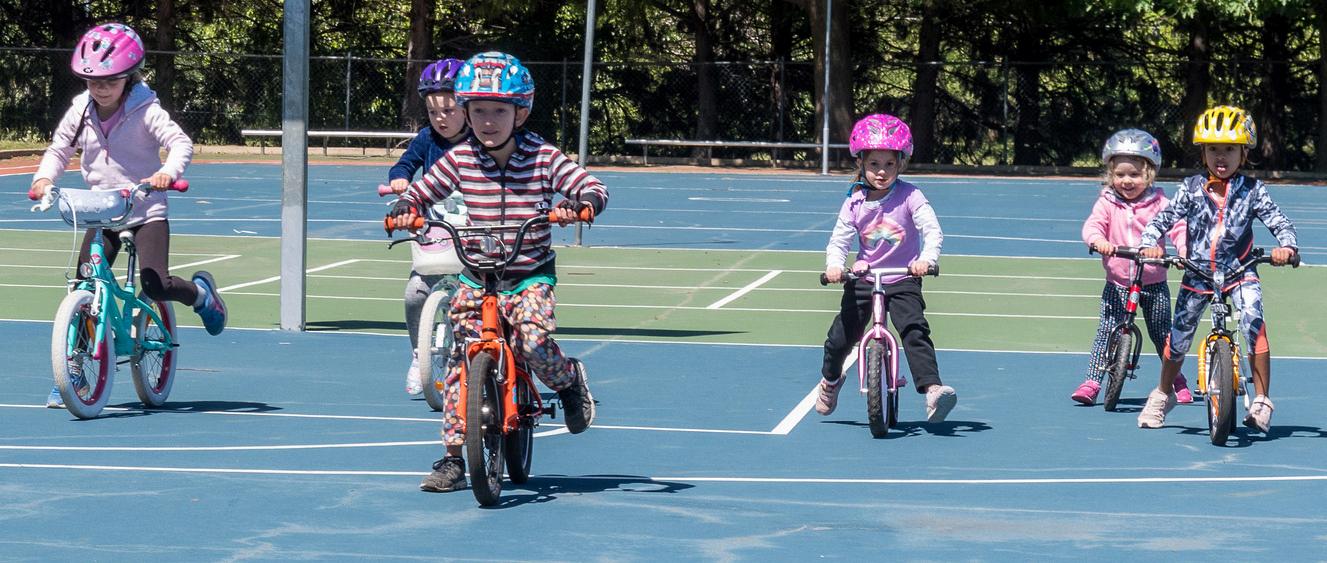

pg.4
RIDING INTO THE FUTURE
First report from Pedal Power's recently appointed Executive Director Cecily Michaels.
pg.5
CHANGES AND IMPORTANT DATES
A report from our President, David Whitney
pg.6
IT’S STALL SEASON AGAIN
New activities and a farewell from Membership and Community Organiser Jordan Hull
pg.7
SCOUTS RIDE VIC RAIL TRAIL
A fun account of an exciting autumn four-day trip by 13th Canberra Scouts.
pg.10
MOUNTAIN BIKING OVER 80
The inspiring adventures of one of our intrepid members
pg.12
IMPROVING YOUR COMMUTER BIKE COMFORT
Expert tips to give you the best riding experience
pg.14
BE CONCUSSION AWARE
What are the signs of concussion and what should you do if you have one?
Editor: Ilaria Catizone
pg.16
SEE THE SATISFACTION IN THEIR FACES
New learn-to-ride trainers share their experiences.
pg.18 Advocacy update.
PROGRESS ON KEY PROJECTS, BUT MORE WORK TO DO
pg.20
An innovative magpie proof riding helmet- paid advertorial.
pg.22
JOIN OUR ELECTION FORUM
Details and faces of our upcoming Election Forum.
pg.23
COPENHAGEN CYCLING INFRASTRUCTURE
A report of what it is like to cycle in the Danish capital.
pg.26
BIKING BITES
A recipe to take riding.
pg.27
CYCLING TO WORK? GET CREATIVE
Multimodal commute
Executive Director: Cecily Michaels
pedalpower.org.au
Board President: David Whitney
PedalPowerACTisbasedonNgunnawalLandandacknowledgesthatthislandwasneverceded tyinourorganisation.


by Cecily Michaels, Executive Director
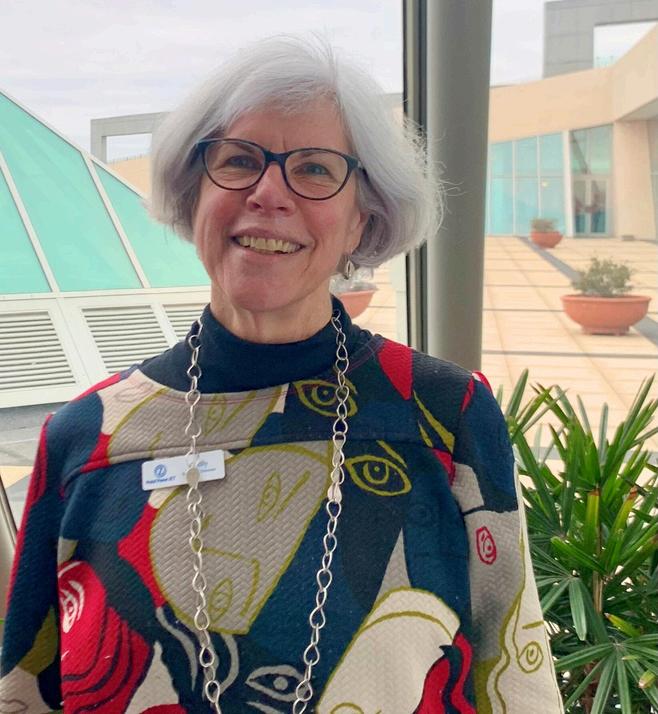
Cycling to work from Kaleen has quickly become a highlight of my move to Canberra, a reminder of why I am so thrilled to step into the role of Executive Director.
Cycling has always been woven into the fabric of my life Growing up in Cunnamulla, one of my earliest memories of freedom was being allowed to cycle the 3km to school. That sense of independence and connection to the world around me is something I’ve carried through various stages of my life. Whether it was cycling as my main form of transport while working as a community development volunteer in a refugee camp for 180,000 Cambodians on the ThaiCambodian border, or commuting to work in Glebe, cycling has consistently been a source of joy and practicality
Now, I am thrilled to have the opportunity to advocate for Canberra as the gold standard for cycling in Australia. More than transport, cycling builds stronger, healthier communities. In Canberra, cyclists benefit from significant advantages, but there is still much work to be done and we must continue to advocate for the infrastructure that makes cycling accessible and safe for everyone.
In the coming weeks, we have several events that underscore our commitment to this goal.
I encourage you to join us on 25 September at our Election Forum, where we will hear from representatives and candidates about their cycling policies and commitments. There will be opportunities to ask questions and your voice is crucial in shaping the policies that will affect our cycling community for years to come.
We are also organising a protest ride on 11 October, to advocate for separated bike-only paths along Northbourne Avenue and across Canberra. I hope to see many of you there, standing (or rather, riding) in solidarity.
In addition to our advocacy efforts, we continue to offer valuable programs to help people of all ages and skill levels get into cycling. We have Learn to Ride courses for children during the upcoming school holidays, as well as courses for adults, from riding to bike maintenance courses
As I settle into this new role, I am looking forward to working with all of you our members, volunteers, and supporters to get more people riding bikes and make Canberra the best it can be for cyclists. Together, we can continue to build a community where cycling is safe, accessible, and celebrated by all.
Finally, I would like to wish Jordan Hull, our Membership and Community Organiser, all the best in her new role with Soil Science Australia. Jordan has made a valuable contribution to Pedal Power over the past two years, and we are incredibly grateful for her dedication and hard work Her passion and commitment have played a significant role in our community, and while we will miss her, we are excited for her as she embarks on this new chapter.
Thank you for your ongoing support, and I look forward to joining you on a ride together.
by David Whitney, Board President
As we move from winter to spring and the mornings become warmer, the blossoms bloom and the magpies start nesting, we have had some important changes at Pedal Power.
As you will have seen in previous communications, Simon Copland has moved on from his position as Executive Director at Pedal Power. I am delighted to welcome Cecily Michaels as our new Executive Director to help guide us over the next few years.
Cecily is a bicycle rider with extensive qualifications in corporate governance, having served for seven years as the CEO of a not-forprofit organisation. She is a graduate of the Australian Institute of Company Directors' rigorous course and most recently held the role of Operations Manager at the Australasian College of Road Safety. Cecily has significant experience working with volunteers and supporting volunteer-led organisations. Her career also includes work on AusAID-funded programs in Palestine and South-East Asia, as well as an early role as a high school music teacher in Queensland. As the public face of Pedal Power, Cecily will be taking the lead with advocacy and cyclist safety as we head to the 19 October ACT Legislative Assembly Election I’m sure you will all make Cecily welcome.
I would also like to say farewell to Jordan Hull, our Membership and Community Organiser, who is leaving Pedal Power to take up a role with a national environmental organisation which will allow her to follow her university study in the field.
Jordan has been with Pedal Power for about two years and has run more safe bicycle storage and promotional stalls at EPIC, universities and community functions than she wishes to

remember Jordan has also been responsible for managing the transition to automated membership renewals which has been a great initiative for Pedal Power. I thank Jordan for her work with us and wish her well into the future.
There are two important dates I would encourage you to mark in your diary:
Election Forum, 25 September at 6.30pm, where we will hear from the relevant transport and cycling politicians from the Labor, Green and Liberal parties. We will be able to ask about their policies and plans for active travel and cycling safety in Canberra.
Protest Ride. Join Pedal Power on Friday 11 October at 4.00pm in a protest ride, seeking a safe and segregated cycleway along Northbourne Avenue
Ride safe on the roads and shared paths and remember a fluro vest is one of the best ways to be seen on your bike
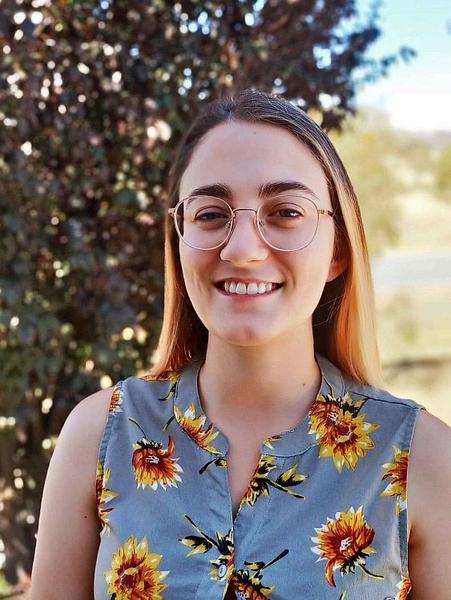
by Jordan Hull, Membership and Community Organiser
It’s the season for volunteering, and we’ve seen a surge in new volunteers lately, which is fantastic! A big welcome and thank you to our recent volunteers. If you have some time to spare and are interested in getting more involved, check out all our volunteering options here.
Our next protest ride on 11 October will call for a separated bike-only path on Northbourne Avenue as well as more investment in active travel at the next ACT election This will be a repeat of our earlier protest ride but this time we’re planning it on a weekday.
Happy spring! This is my favorite time of the year to ride (minus the magpies).
Community Stalls
We’re excited to be out in the community again soon. You can find us at the SEE Change Sustainability Fair in Kambah on 22 September and the Seniors Expo in Kingston on 25 September. Come join us!
On Monday 26 August, we screened the film Women Don’t Cycle at the National Film and Sound Archive. It was an inspiring film followed by a fantastic, thought-provoking panel discussion. We extend our heartfelt thanks to our wonderful panellists: Chloe Hosking, Wendy Studman, Kate Bradney and Paris Lord If you missed the event, you can still watch the film online at Women Don’t Cycle.
Our next film night is on Tuesday, 5 November, when we’ll be screening the freeride mountain biking film Anytime. There will be a panel discussion after the screening, with speakers announced closer to the event.
We’re thrilled to have reached over a quarter of our fundraising goal to keep the Bike Library open. If you haven’t already donated and would like to, please visit our fundraising page. To support this fundraiser, we are also hosting a Bike Library film night in Taylor on 16 November to screen the classic family movie E.T. the Extra-Terrestrial. Join us to support the Bike Library by purchasing your tickets here.
Just a quick note to let you know that this will be my last report as Membership and Community Organiser for Pedal Power ACT. I’ve accepted a new role as Membership Coordinator for Soil Science Australia, where I’ll be diving into my passion for environmental science.
By the time you read this, I’ll have wrapped up my last day on 12 September. It’s been a fantastic ride working with Pedal Power, and I’ve really enjoyed meeting all of you our amazing members and volunteers.
Catch you on the bike paths!
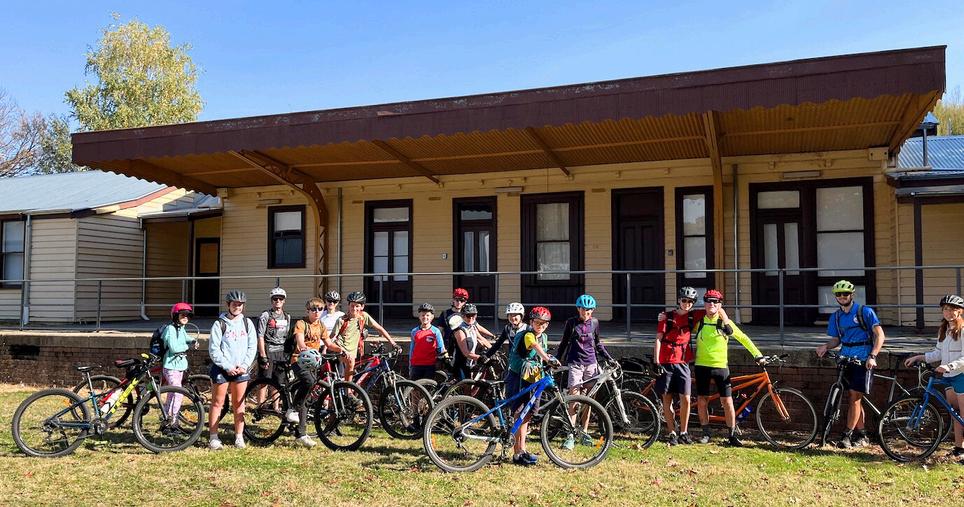
by Graham Downie
Pushing quite hard on our return to Myrtleford to catch the icecream shop before it closed, a snake on its journey across the trail sent a line of five or six bikes jostling and scattering to avoid the reptile.
Remarkably, no one fell, though at least one Scout found himself off the trail Until then, there had been little conversation. Suddenly, everyone was talking, recounting their close encounter with the black snake.
It was the second day of what has become an almost annual autumn four-day trip by 13th Canberra Scouts to the pleasures of cycling on Victoria’s rail trails. Beginning in Beechworth, just a short exploration of the historic town, mainly to check if any bikes needed adjustments, and an overnight stay at the Beechworth Scout Hall. Then the main riding began with a 46km run to Myrtleford.
The altitude of Beechworth is about 560m, almost 350m higher than Myrtleford, making this a relatively easy day ride.
Despite the relative safety of these excellent rail trails, time was taken before departure to remind Scouts, aged 11 to 14, not to be lulled into a false sense of security.
First, after leaving Beechworth there is a steady descent of almost 15km with occasional road crossings. Other similar groups have had quite serious crashes on this descent, generally by riding too close. The message was repeated several times, this is not a race and watch at every road crossing for motor vehicles. The nearest anyone came to a crash was the next day when we encountered the snake
After about 16km we had morning tea at the intersection of the Beechworth-Everton trail with the Wangaratta-Bright trail. These are largely the routes of former railway lines, hence the current name of ‘rail trails’. The much shorter Tumbarumba to Rosewood rail trail is the closest similar trail to Canberra, hence our journey to Victoria.
These trails are suitable for gentle cycling because the gradients reflect what was possible for steam trains. For example, according to my speedo, the elevation gain on the uphill sections of trail from Beechworth to Myrtleford is only 226m. This is mainly on a long, steady climb from Bowman Station to Taylors Gap passing through
farms and bushland and a view of Mount Buffalo. Then past Gapsted Winery down to Myrtleford, and our accommodation at the town’s recently refurbished Scout Hall, previously a Masonic Lodge.
Some enthusiasts went for a swim in the nearby Ovens River Only to find what others had suspected – in late April the water was cold.
Some Scouts, even if still slightly daunted by the next day’s 66km return ride to Bright, had largely overcome any doubt they might have had about completing the ride. Though about 20km further than the first day, the elevation gain is only 126m.
Activities such as this help Scouts to develop self confidence in a challenging, though not extreme physical pursuit There is also the wonderful social opportunity over several days of communal living, preparing meals and sharing floor space.
Blessed with lovely autumn weather, the
Myrtleford-Bright leg is a particular favourite of the trip. Once known for tobacco farming, hops is now prominent among the area’s agriculture.
Only a few days before we were due to depart, the logistics of getting 17 people and their bikes to Beechworth seemed overwhelming. In desperation I phoned the Pedal Power office to ask if anyone knew where one could hire a bike trailer. Yes, Pedal Power has two. So arrangements were made at a most reasonable charge to pick up the trailer the day before our departure.
Even with five bikes on a car, the trailer could not accommodate all of the remainder. To my aid came David Austin, a Pedal Power member and cycling partner of mine We spent about two hours tightening bits which were too loose and loosening bits which were too tight, liberally spraying WD40 on the more stubborn components. Some of the stands could still not be used, but there were enough to transport all of the bikes. On our return, I offered to assist with maintenance of the trailer, without which our trip would not have been possible.
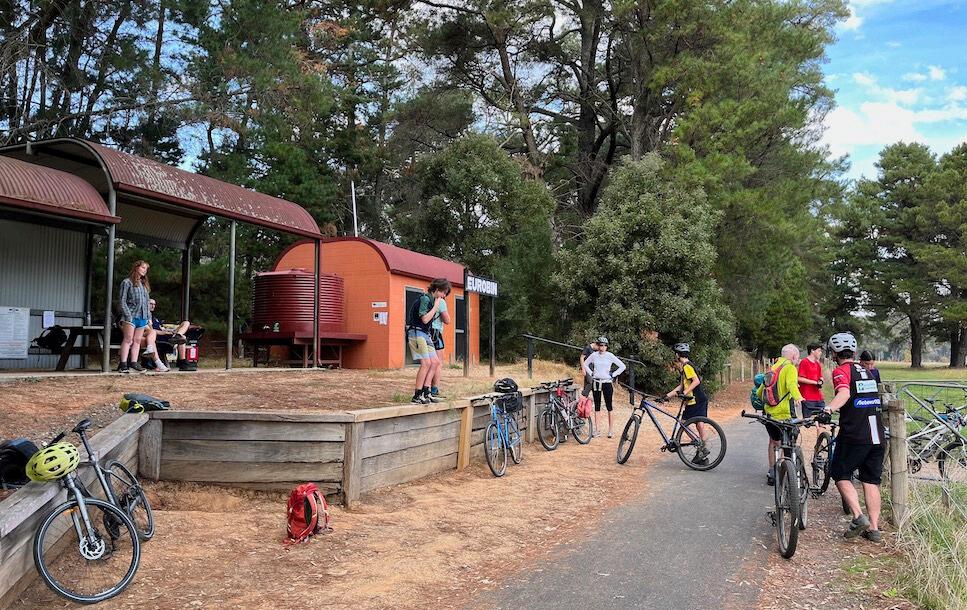
The value Scouts put on this activity is indicated by those who have done it twice, even a third time This route is suitable for people almost regardless of age. One of the youngest Scouts on this ride completed it three years ago with us as an eight-year-old. This time he was closer to the front and on the final day, Myrtleford to Wangaratta, chose to ride the 55km with the back markers who left more than an hour later so cars could be shuttled
All arrived safely in Wangaratta, no falls, not even a puncture, though there was a broken chain on the second morning. More importantly, all arrived in good spirits, having visited a lovely area while achieving their goal.
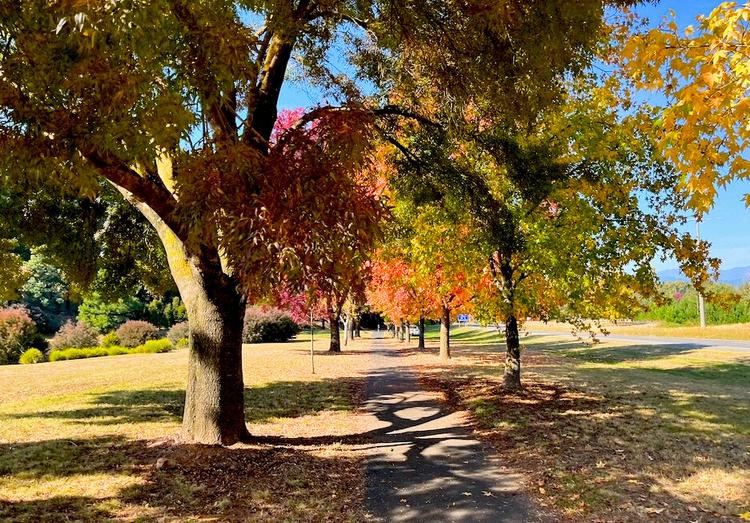
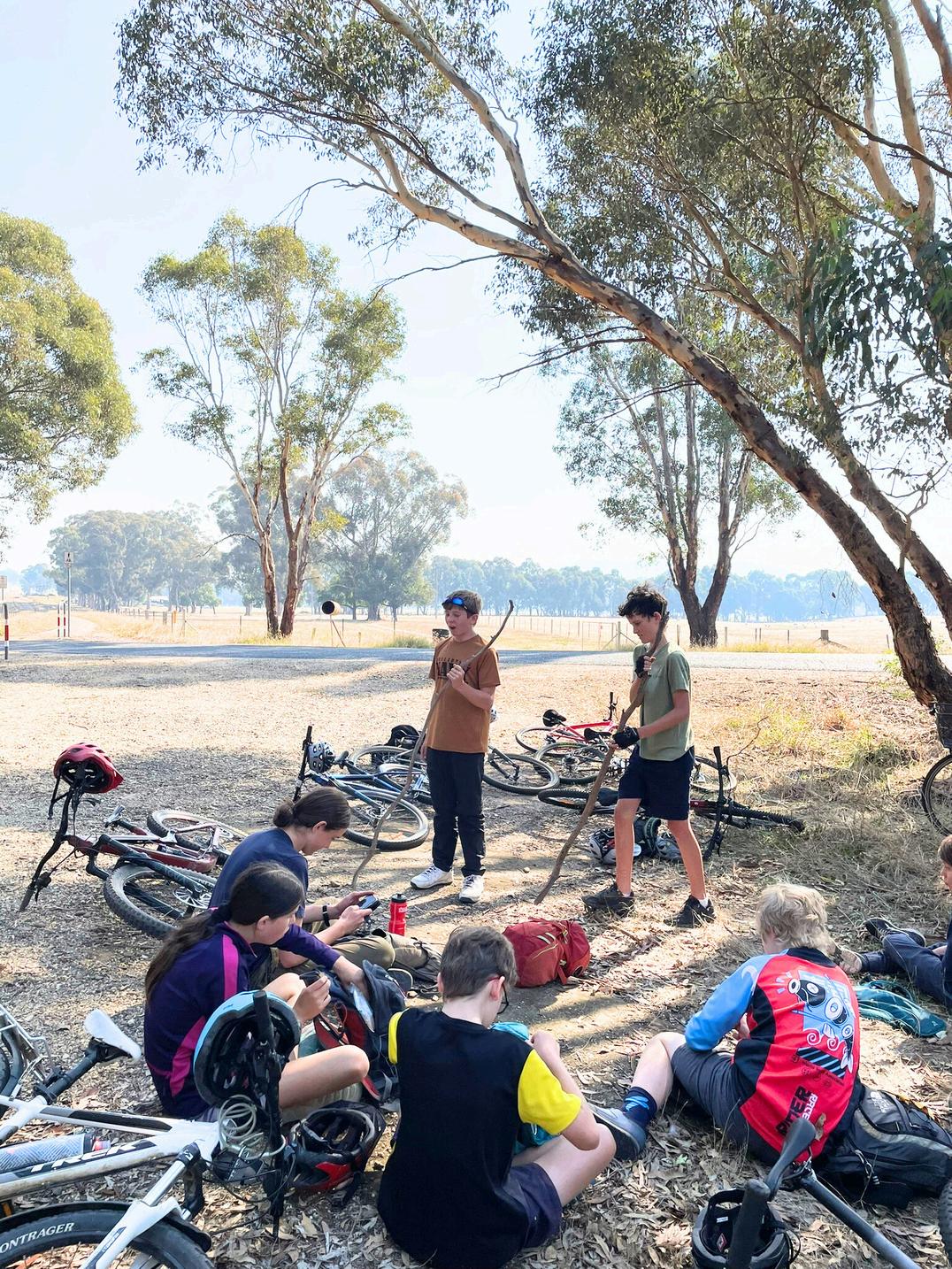
by Anabel Hart
Jan Moore is 81 years old and loves taking her mountain bike out and about with her friends.
Jan started riding as a child. “I was at an annual extended family picnic in a park Someone had brought a bike which I ended up riding all afternoon. The next day, my dad and I went to the shops, and he bought me my first bike,” she says.
To this day, she is still an avid cyclist. “I prefer to be on a bike rather than using a car I have an old hybrid bike that I use around the city, and I never have to worry about parking,” says Jan.
Jan took on mountain biking in 2013 when she joined a Tour De Darling, organised by our Board Member John Widdup. “I am always up for a bit of adventure and the Tour de Darling fitted that criteria,” she says.
“We travelled from Hebel to Wentworth over 3 weeks following the Darling River,” says Jan. The tour included 24-26 cyclists with many challenges along the way.
One of the biggest challenges was bull dust, a very soft, easily disturbed sand. “Only one person managed to ride through all the patches without a fall,” Jan recalls.
Amongst the many memories from the trip are the pleasant swims in the Darling River after a long day riding in rather hot conditions, refreshing Jan and others for the next day of adventures.
The Tour also brought many unique experiences, with camping and shared spaces, which allowed the participants to grow a close bond.
Now Jan continues her mountain biking with our weekly groups, the Monday Challengers and Wednesday and Friday Dirt Riders.
The Monday Challengers’ rides range around 20 to 25km and are best for experienced and confident riders. Wednesday dirt rides range around between 19 and 40km and are suitable for less experienced riders. Friday dirt rides are up to 30km and for experienced riders
Jan also enjoys rides outside of our social rides, “I use an e-bike when cycling with my Pedal Power friends. I still manage to ride my non-e-bike up Mt Pleasant and Mt Ainslie,” she says
When asked about advice for people wanting to try out mountain biking, Jan says “Go for it! It is lovely to ride in the bush and away from traffic. Riding away from the business of the city and cars is a great way to reconnect with nature and relax.”
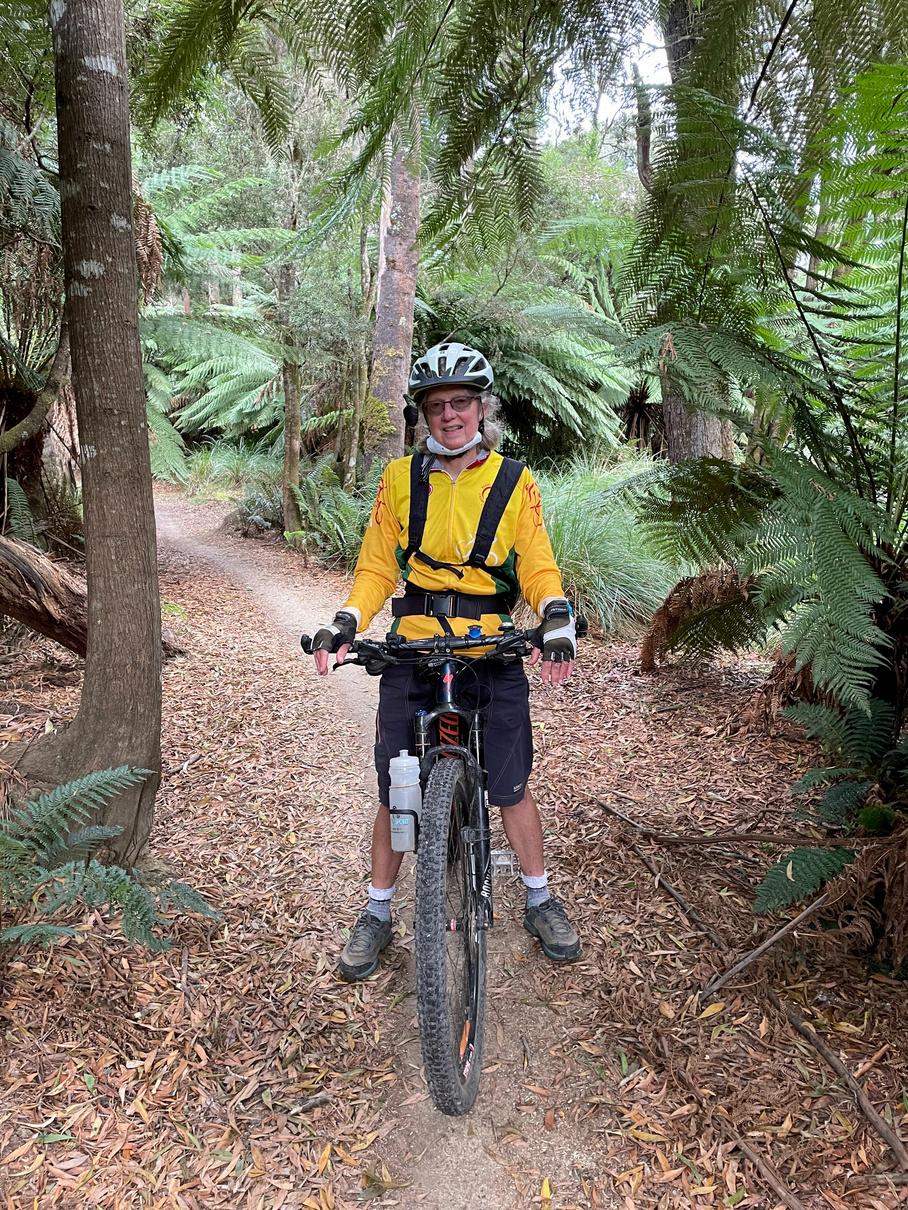
If you or someone you know needs a bit of help getting started with riding, we offer learn-to-ride courses for children and adults.
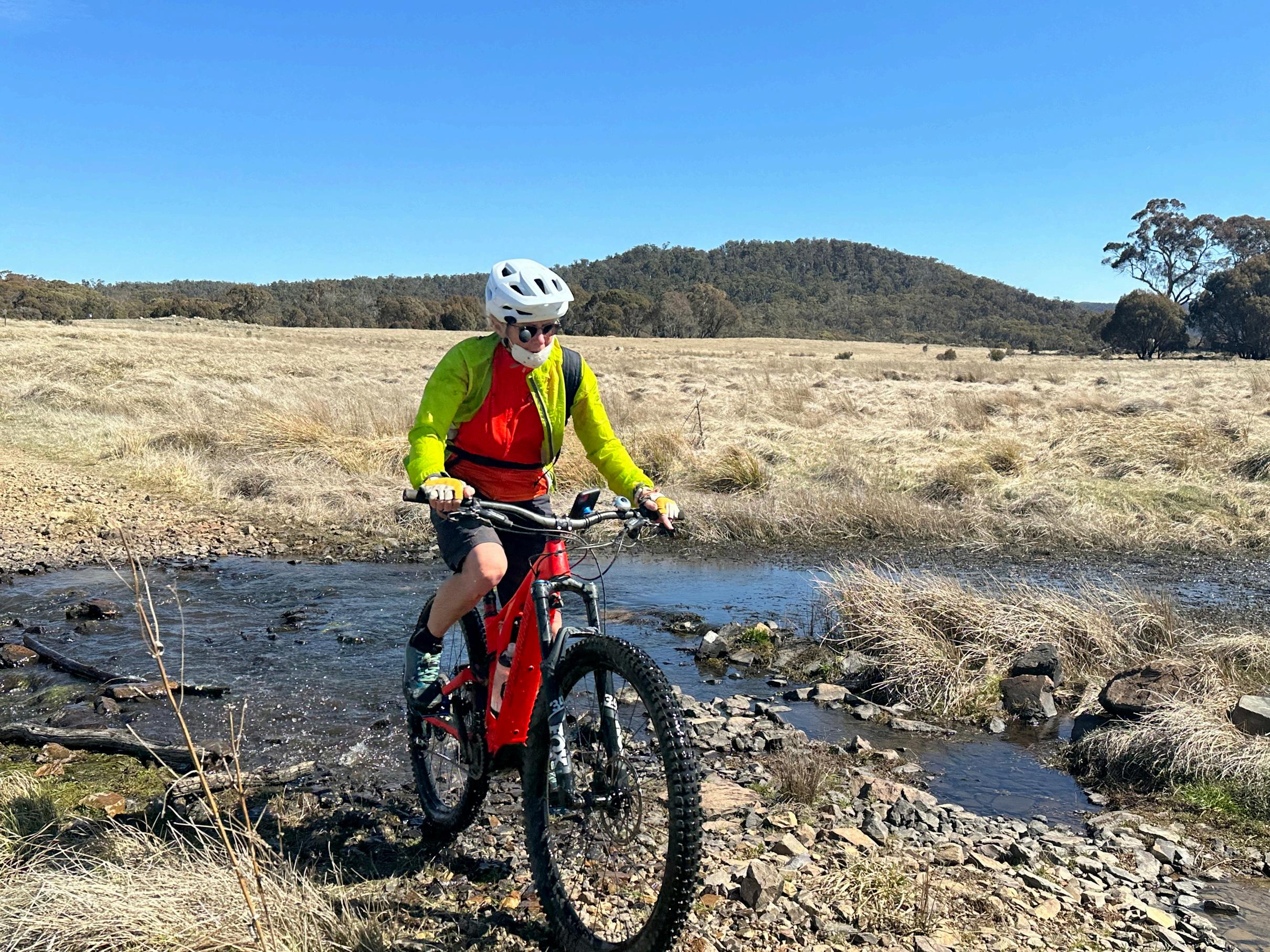
by Vicki Whitelaw
A lot of what I read online and in the cycling magazines in regard to bike fitting principles seems very skewed to the performance cyclist or the ‘Lycra clad’ group.
But what about the rest of us? Here are some main equipment considerations to keep you comfortable and riding for many years.
To help you decide on a saddle, the first question is: what are your goals?
Gran Fondos, long distance Audax, commuting, nipping down the shop for groceries on your e-bike?
When it comes to saddles, there is not one type to suit everyone but there are some general guidelines that can help narrow the field.
Start with your position on the bike. If you tend to ride more upright, you are probably targeting your rear more and require more padding. If you tend to ride more aggressively (lower front end) consider a short nose saddle
Adjusting the saddle correctly can also make a big difference. Often only small changes such as tipping the nose slightly downwards (half a degree) or dropping it by 5mm can improve comfort
If your commute is relatively short, you may be fine in your normal work clothes. However if your commute is longer, the weather is hot, cold and/or wet, some extra cycling clothing may help.
A pair of padded cycling shorts will definitely help in longer commutes. The shorts you choose should fit closely to your skin so they won't rub as you pedal The specialised fabric will also wick moisture away
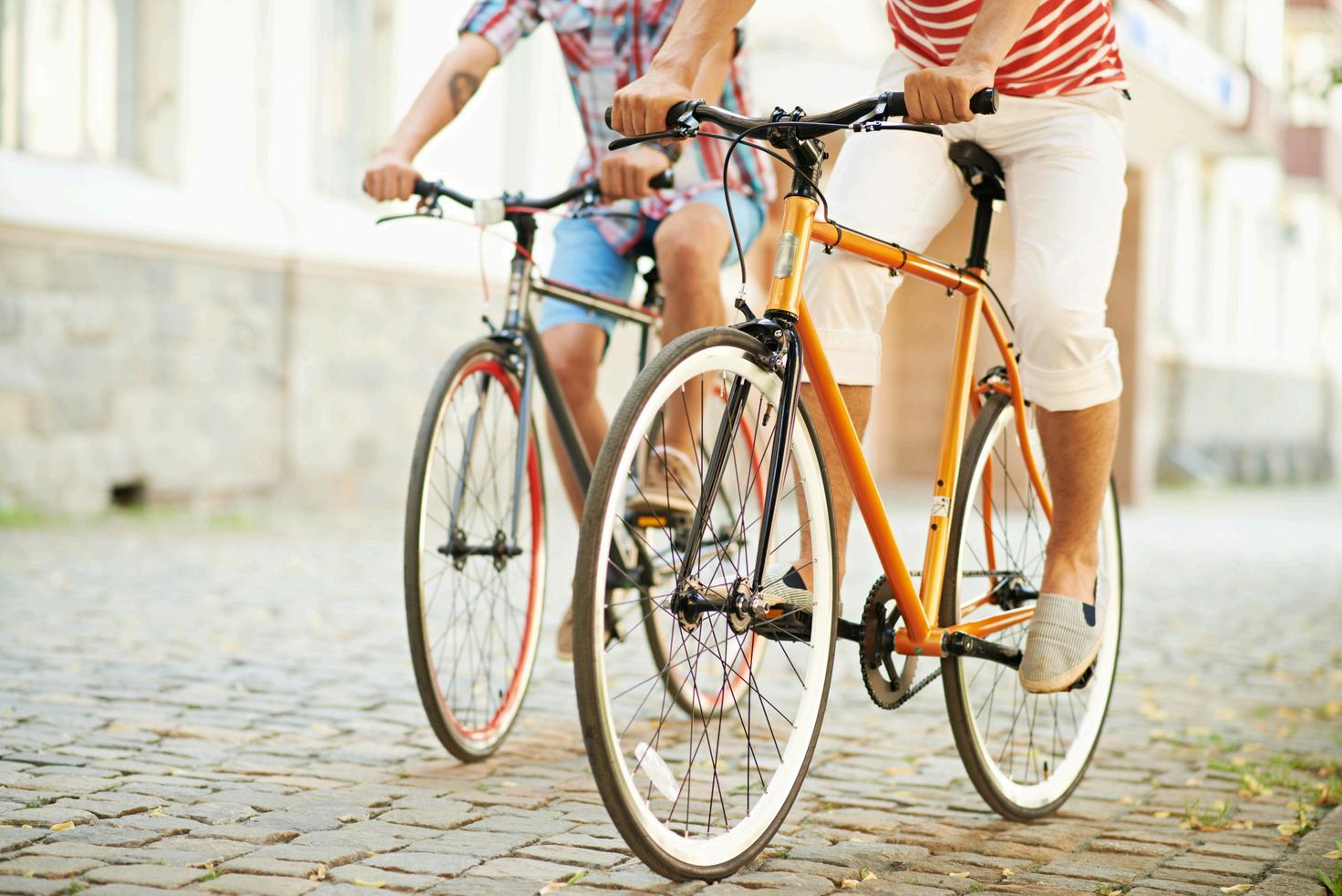
from your body, helping to keep you more comfortable and avoid the dreaded saddle sores.
If the tight Lycra look isn't for you, you can wear baggy shorts with a pair of padded undershorts or your normal clothes with a padded short liner.
If you are adding padding to your clothing, then you will likely have to consider a less padded bike saddle. With the padding in your shorts, the saddle should be fairly firm Otherwise too much padding can lead to problems – like pressure on soft places you really don’t want squeezed!
Many newer cyclists start out on flat pedals as they don’t want the hassle of learning to clip in and prefer to be wearing casual shoes once they reach their destination.
However, what makes walking better can make pedalling worse, as the pedal can push into the foot and the foot can bend around the pedal. Numbness, pain and even injury can result from a poor pedal and shoe combination. To prevent problems, look for shoes with a stiff sole (not your joggers) and if problems persist, consider cyclingspecific shoes
Some examples include ‘road type’ clipless pedals and ‘MTB type’ cleats The first are more efficient to pedal in but can lead you to walk like a duck and slide like a penguin on ice at your journey’s end.
‘MTB type’ cleats are more resilient to wear and tear and less slippery to walk around, but you still need to learn to clip in.
An alternative is to opt for hybrid type pedals featuring, on one side of the pedal, an attachment to clip on, and on the other side a flat surface
The pedals themselves are worth a thought too. Look for a pedal with a larger contact surface area to spread the load across the foot.
Which handlebars come with your bike will depend on the style of bike you have (road, urban, MTB etc ) Handlebar shape, width and position can all have a significant impact on your ability to ride comfortably.
A substantial portion of ‘commuter’ bikes have flat handlebars. Many cyclists find this setup works well, however other riders present with hand and arm numbness or shoulder pain The neutral position for our hands/arms when held out in front of us is for the thumbs to be pointing upwards (think holding a ball) Flat handlebars force us to
have the thumbs pointing inwards, potentially causing tension in the nerves of the wrists, arms and shoulders.
Another potential issue with flat handlebars is that the range of hand positions is limited. This can cause issues as the cyclist stays in the same position for extended periods of time.
If you are experiencing issues, there are a few things you can try. Firstly, ensure the handle bar is in the right place – not too close or far away, too high or low. Secondly, if you have flat bars, adding bar ends could be an inexpensive but very effective solution They provide a second, more natural hand position. The third option is to change the bars to something with more sweep (angling backwards) for a closer and more natural position.
Vicki Whitelaw is the owner of Winning Position
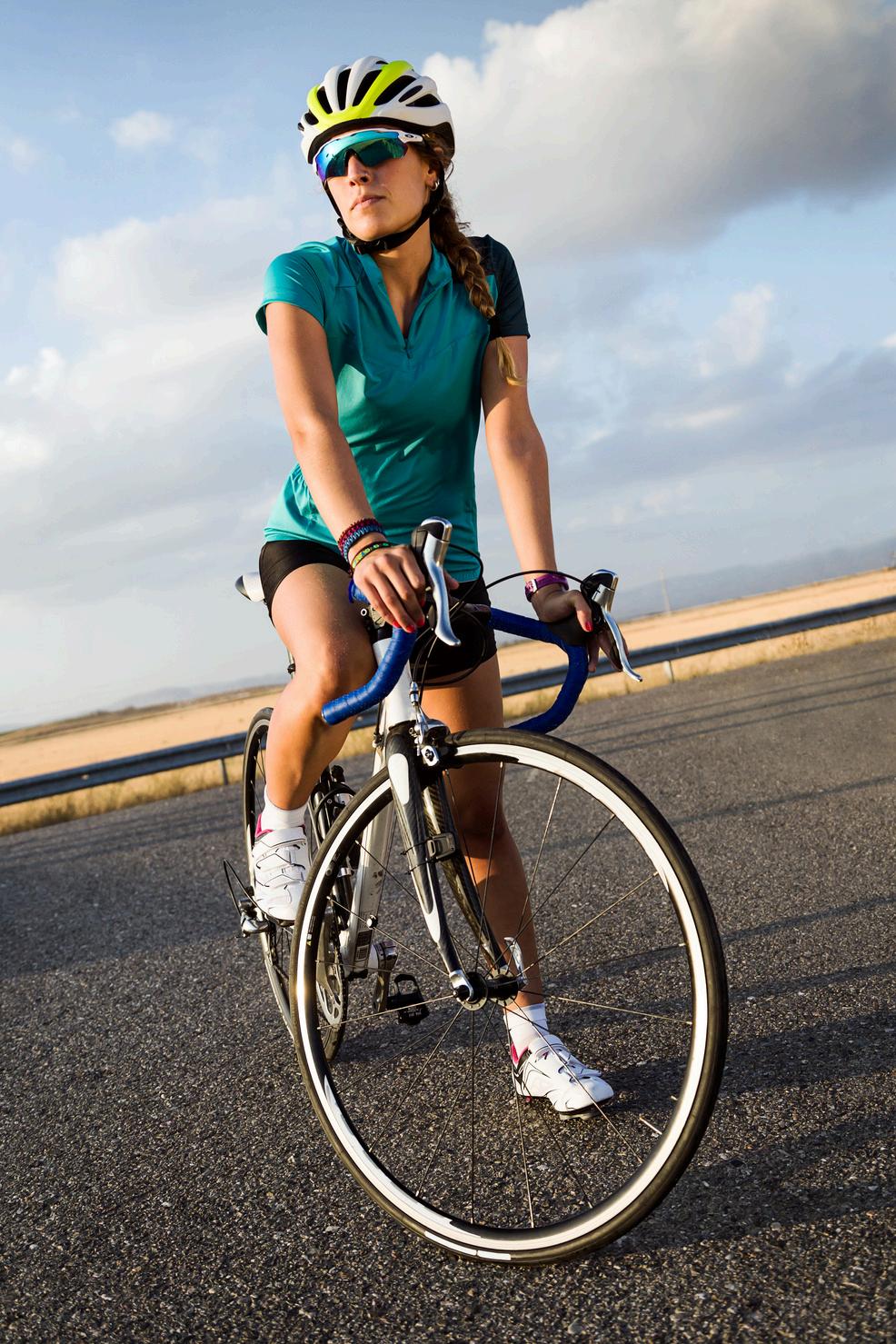
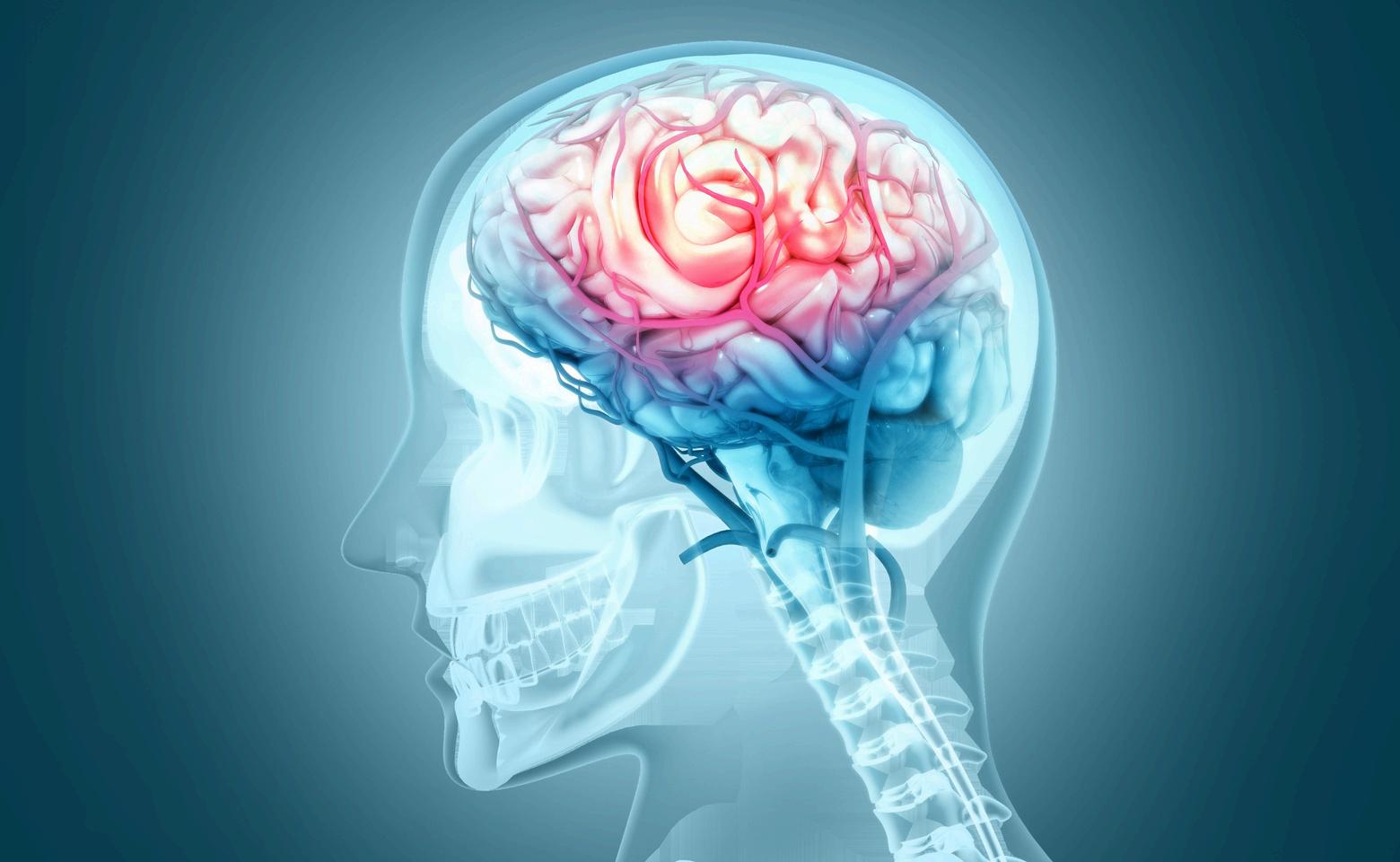
by Kristine Lew
Concussions can happen due to a blow to the head or elsewhere on the body with an impulsive force translated to the head, causing the brain to accelerate or decelerate and creating a shearing effect on the nerve cells.
This can result in temporary changes to how the brain functions due to a rapid discharge of the brain cells, which depletes the brain of stored energy. How temporary these changes are is different in each case, but depends heavily on receiving proper care and advice.
Symptoms may include loss of consciousness, headache, pressure in the head, neck pain, nausea or vomiting, cognitive problems, dizziness, or balance problems, among others.
It is important to note that helmets are great for preventing skull fractures and associated brain injuries, but DO NOT prevent concussion. So if you have taken a spill from your bike – even if you don’t impact your head, you should watch out for symptoms and promptly seek medical attention if in any doubt
Children as well as people with a history of concussions or mental health problems, such as anxiety or depression, may take longer to recover
If symptoms are still present after 10 days, this is an indication that rehabilitation and treatment is likely required.
Persistent symptoms
In some cases, the effects of concussion can last for weeks or even months; this is known as PCS (PostConcussion Syndrome), which is experienced by 30-40% of people. Getting prompt assessment and education, as well as following proper return to work or play guidelines can help to reduce the risk.
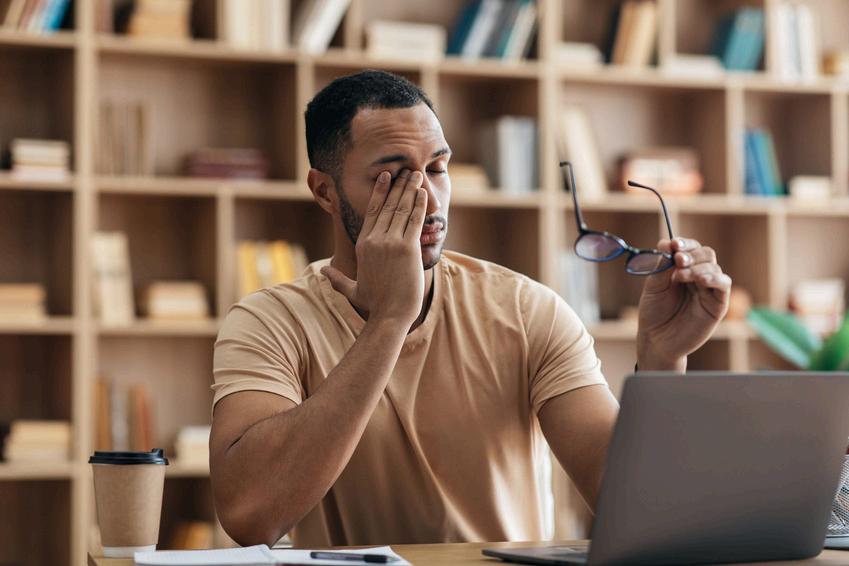
Manual therapy
Concussion treatment and rehabilitation
Rest is no longer considered the best approach in concussion care. Early intervention of various therapies can significantly improve recovery following a concussion. Through a thorough assessment and the right treatment approach, trained physiotherapists can help you safely return to learn, work and play and even speed recovery!
Exercise therapy
Following a short period of rest and symptomlimited activity, guided exercise therapy starting as early as 5-7 days after injury has shown to improve blood flow and speed recovery
Where there is concussion there is ALWAYS a degree of whiplash, which can cause symptoms including headaches, balance and visual issues, dizziness and blood flow abnormalities. These can be treated with manual therapy.
Visual & vestibular therapy
A balance and visual rehabilitation program may help to reduce symptoms such as dizziness, visual abnormalities, concentration issues and memory problems, among other symptoms.
Education & reassurance
Understanding exactly what is going on and why you feel a certain way can help to improve recovery.
Diet & nutritional intervention
Avoiding pro-inflammatory foods (e.g., processed meats, fast food, sugar) and replacing them with more nutritious foods (e.g., whole foods, fruits, vegetables) may help to offset inflammation and reduce symptoms.

by Phoebe Spurr
Robert Langridge recently became fully accredited as a learn-to-ride trainer. "It is most satisfying seeing a child progress from not riding at all to zipping about the training area with confidence and a grin on their face!" he says.
Pedal Power runs learn-to-ride courses for both adults and children. The Big Skills for Small Bikes program takes place every school holiday. It aims to build lifelong cycling habits among children aged 3-8 The curriculum-based program led by a trainer equips parents and carers with the knowledge and skills to guide their kids towards confident and safe bike riding.
Adults can attend Cycle Well if they are complete beginners, or New Horizons to improve their confidence.
Robert felt compelled to become a course trainer as he noticed that children tend not to play outside anymore and may not have the opportunity to bike ride. "One way to get more people riding bikes is to teach them how to ride and show them safe places to do this," says Robert.
Robert is a Canberra local and grew up cycling in Watson. At six years old, he got a bike with training wheels, and by day two, he was encouraged to ride without them. Since then, Robert has ridden for many decades, participating in triathlons in the 1980s, commuting by bike in the 1990s, and road racing in the late 1990s. He is now a hobby bike mechanic and restorer.
Graeme Hoy was also recently accredited as a trainer "I wanted to assist more people, both children and adults, to get riding and take advantage of the many cycling experiences available in the Canberra region," explains Graeme. "Now that I have retired, there was no excuse not to get involved in teaching people to ride "
Graeme received his first bike when he was five years old. He fondly remembers riding up and down the footpath in front of his grandparents' house in England. Even after his family moved to Sydney, cycling remained a significant part of his life until graduating university For a brief time, he put cycling on pause but rediscovered the joy of cycling when his children came onto the scene. In 2007, Graeme moved to Canberra, appreciating long rides on shared paths around the ACT region.
Graeme and Robert's experience with riding made them ideal trainers for Pedal Power’s learnto-ride courses.
"The training to become an instructor was very straightforward, with many practical activities,” says Robert.
"Pedal Power ran a train-the-trainer course, led by marvellous Sian, which gave me and fellow
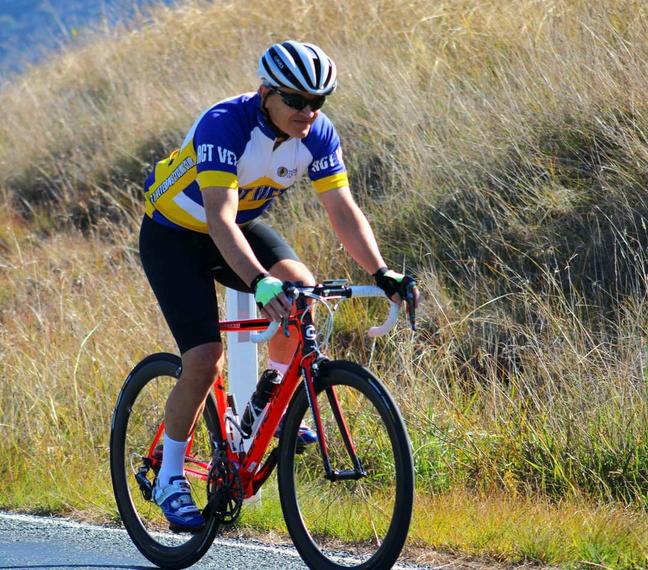
attendees a structured curriculum to follow when training adults or children," says Graeme.
Members interested in becoming trainers will attend an orientation session held by an AusCycling-accredited coach. Once they learn the necessary skills, they will assist an experienced trainer during a course. Then, they will lead a course supported by an experienced trainer
Courses operate with two trainers to help manage the group and assist those learning at different paces.
"One of the first things you realise is that everyone is different in age, physical abilities, confidence and personality," says Graeme. "Each cohort of attendees is different, so a trainer needs to adapt and respond to the group's needs."
"I found that learning to verbalise and explain things that have been done without conscious
thought can be quite challenging," says Robert. "It was satisfying to find the language that can be converted into an action".
The learn-to-ride courses are not only rewarding for the children and adults involved but also for the trainers.
"The reaction of the kids and adults when they realise they can ride is priceless," says Graeme. "I mostly look forward to meeting enthusiastic kids who want to learn how to ride their bikes and try to make the course fun for them. Those smiles when they get up and pedalling are our reward," continues Graeme. "I would encourage anyone with a passion for riding to consider putting their hand up to become a trainer."
"If you love bikes, riding and spreading the message, just give it a go," says Robert
Once fully accredited, trainers receive a small monetary compensation. Find out more here.
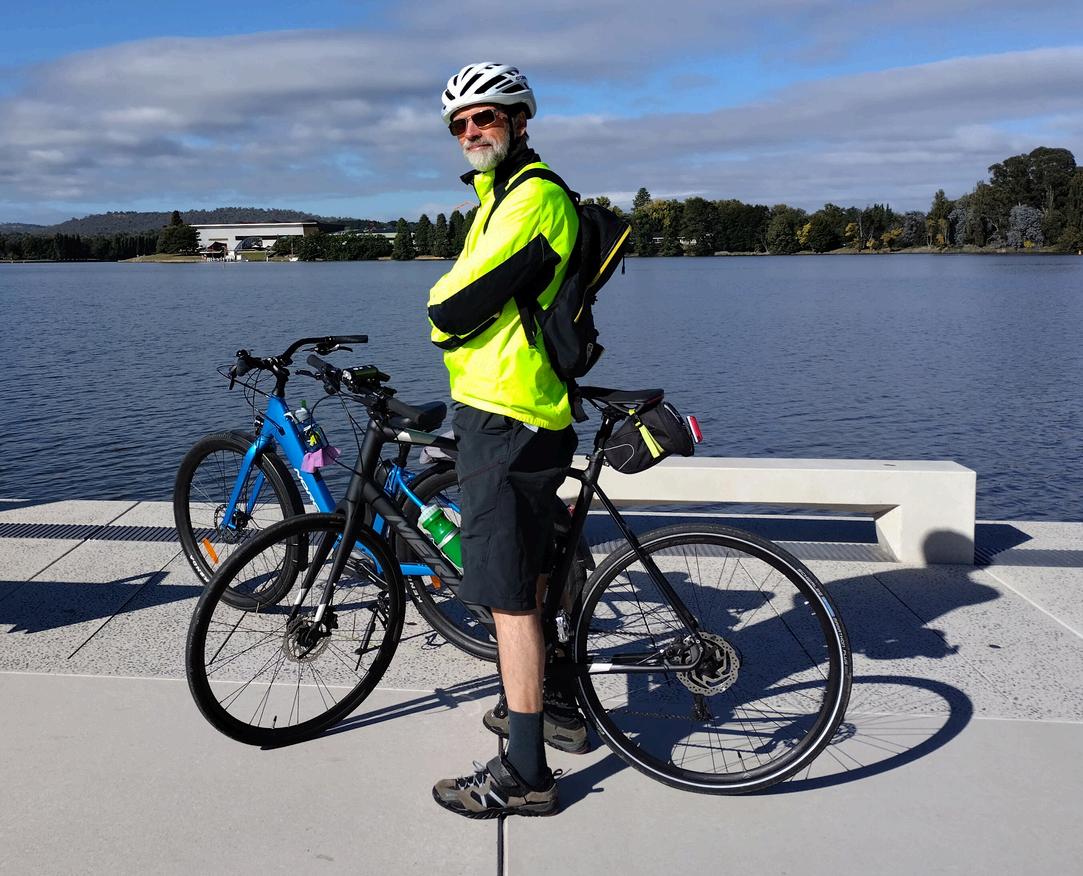
It’s been a really busy few months around Canberra, with the ACT Government getting started on a range of key active travel projects. Here are some key highlights.
The pop-up cycle lane on Bowen Drive has opened! This is the first of its kind in Canberra and is already showing to be a big success.
Connected to this, the ACT and Federal Governments have announced $10 million in road safety funding, which includes a range of active travel projects The biggest investment is $2 7 million being put into the second stage of the Kingston Cycleway, taking the Bowen Drive popup lane to the Kingston Foreshore. There is also money for construction of new crossings and path widenings in Belconnen, Woden and the Inner North. This funding is really important. The Federal Government has for years given state and territory governments money for road safety, which has always gone to roads. We understand that this year, the ACT Government was the first ever that asked for active travel projects to be part of this funding round. And they were successful! We really are glad the ACT is seeing active travel as part of broader funding for road safety, and are really glad the Federal Government is investing in this way.
Construction has, finally, started on the Garden City Cycle Route. You’ll see fences for the section along Torrens Street from Cooyong Street to Henty Street, and tenders are out for the next sections heading north. While it has taken a long time,
we’re really happy to see this getting started.
There’s also progress on projects in Tuggeranong and Belconnen Down south, folks living in Kambah are currently dealing with disruptions on Sulwood Drive as upgrades to that road are undertaken. This will include a long-awaited shared path along the southern edge of the road, which will be very important for the area We’ve also had confirmation that the Athllon Drive duplication project will include an underpass under Sulwood Drive, making that crossing much safer.
In Belconnen, construction is underway on path upgrades around Lake Ginninderra. The first stage is happening alongside John Knight Park, replacing old, cracked paths with something much smoother and wider Further north, the Government has announced that design is underway for two stages of Kuringa Drive active travel upgrades. The first stage is to address the missing link between Owen Dixon Drive and
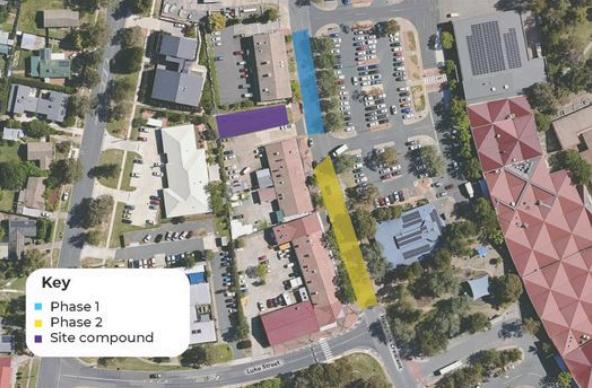
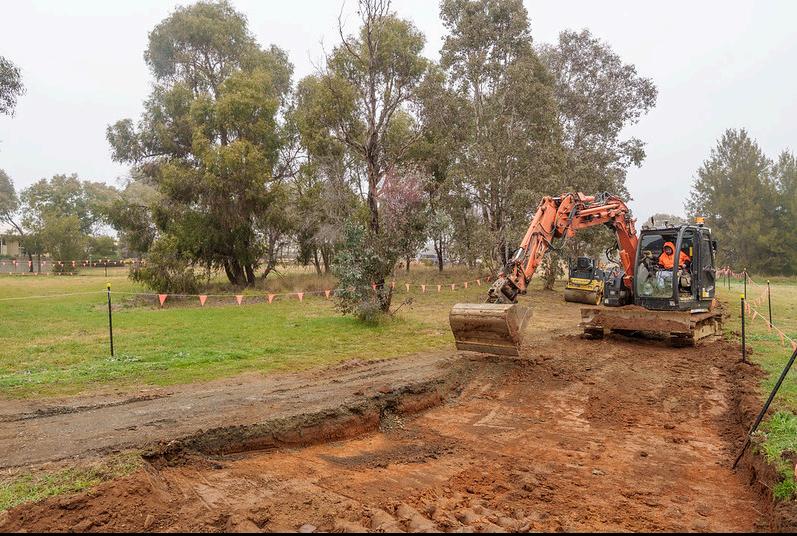
Kingsford Smith Drive, and then upgrade the narrow path that takes you to the shops, and address the missing link on the KSD side of the shops. We’re hoping this will get funded once design is done. Finally, improvements are coming to Hardwick Crescent in Kippax In this area, we're particularly happy to see the construction of raised pedestrian crossings, wider footpaths and better street lighting. All of this will make the area safer and more attractive.
This is all good news for bike riders and pedestrians all around Canberra. It shows the Government is slowly changing its priorities, finally realising how important investment in active travel is We should celebrate these successes!
However, we cannot rest. While the ACT Government has good projects on the books, they have often taken far too long to get off the ground. The Garden City Cycle Route, for example, has been a government ‘priority’ for twenty years and has been announced multiple times before this construction has finally started. The full project isn’t even funded yet, and at the current speed, it will take nine years to complete!
That is not good enough
We’re just not putting enough money or priority into active travel, with hundreds of millions still being poured into road duplications that research shows will have no impact on reducing congestion. This is happening while active travel projects are still required to fight for scraps. While the Government is saying the right things, they need to amp up the ambition and the funding to these projects
We have an ACT election this year and can help make change. Make sure you make this year your time to demand better of our ACT politicians –we need money and action, not just words! Help us make this change by coming along on 25 September to Pedal Power’s Active Travel Election Forum, where we will be grilling the three major parties on their commitments to active travel. This is a great opportunity to show our politicians that active travel is a vote winner and they need to show real commitment in the next four years.
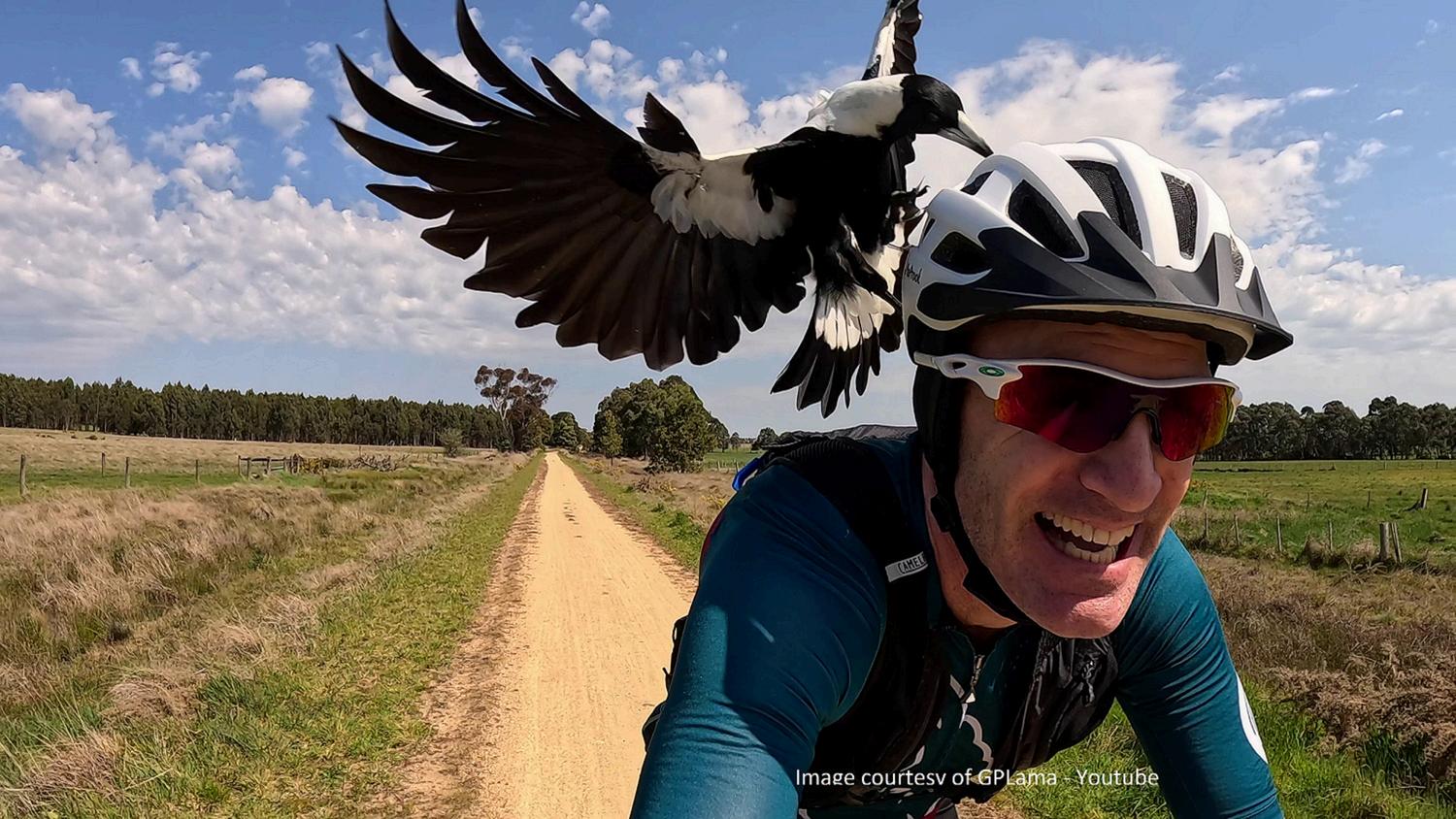
Leo Boesten was attacked by one magpie too many and decided to do something about it. After many decades of grudgingly accepting this annual menace, it was a 3 day post-Covid ‘freedom’ ride that instead resulted in tension, anxiety, several direct injuries and a near crash that made the keen Dutch-Australian cyclist think that there must be a better way to keep Aussie cyclists safe.
Leo recognised very early in the process that aggressive magpies were not going to be deterred by a few pieces of wobbly plastic and googly eyes so he focussed on a different path in the design of PieProof helmets. Most of the thousands of Magpie-related accidents each year occur when the stressed rider crashes the bike while trying to fight off or avoid the bird. In recognising this fact, PieProof helmets have been designed to maximise the level of protection provided to riders.
Knowing that they are well-protected, riders can stay calm and focus on the road ahead while they ride through the bird’s territory. After all, these beautiful birds are only defending their young while you ride through their backyard.
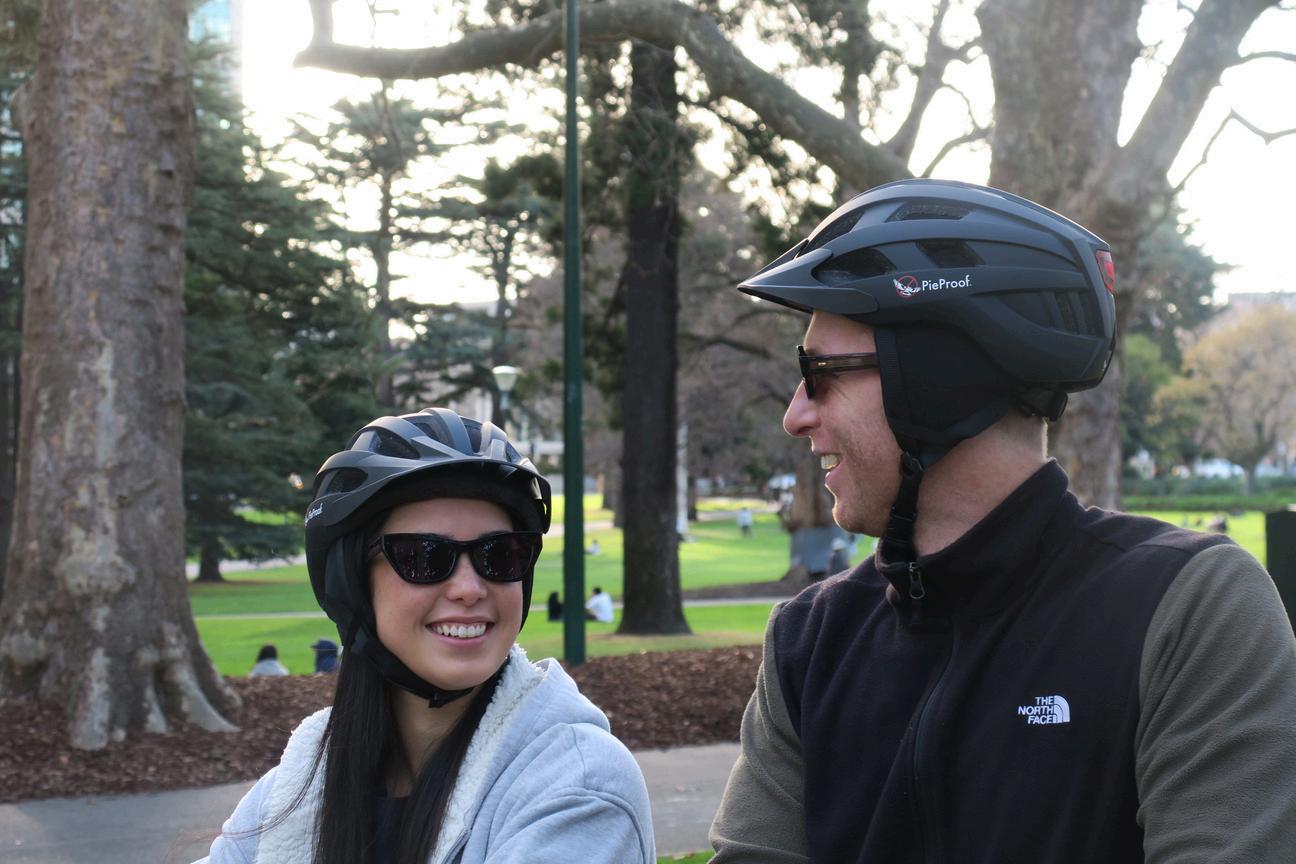
There are several unique features that define this Patent Pending helmet.
A strong, pet-proof mesh is moulded into the air vents to keep beaks and claws from contacting your head whilst maintaining excellent ventilation.
1. Detachable ear protectors stop birds from nipping your ears. These protectors also keep the chilly breeze off your ears during winter and can be put away during summer and autumn.
2 The detachable visor when coupled with protective glasses provides protection to the eyes and face.
3 Angled rear vents keep beaks and claws out.
5.
4. The integrated rechargeable LED tail lamp won’t deter Magpies, but it may still save your life.
PieProof helmets have been designed to meet the unique needs of Australian riders. They are light (just 270g in Med), well-ventilated, have multiple adjustments for the perfect fit, and they look good!
Where to find the PieProof helmet
You can visit the Canberra home of PieProof at Ride Shop, 4 Lonsdale Street, Braddon, 02 6162 1299 or if you prefer to shop online, you can do so at PieProof.com.au or on Amazon.
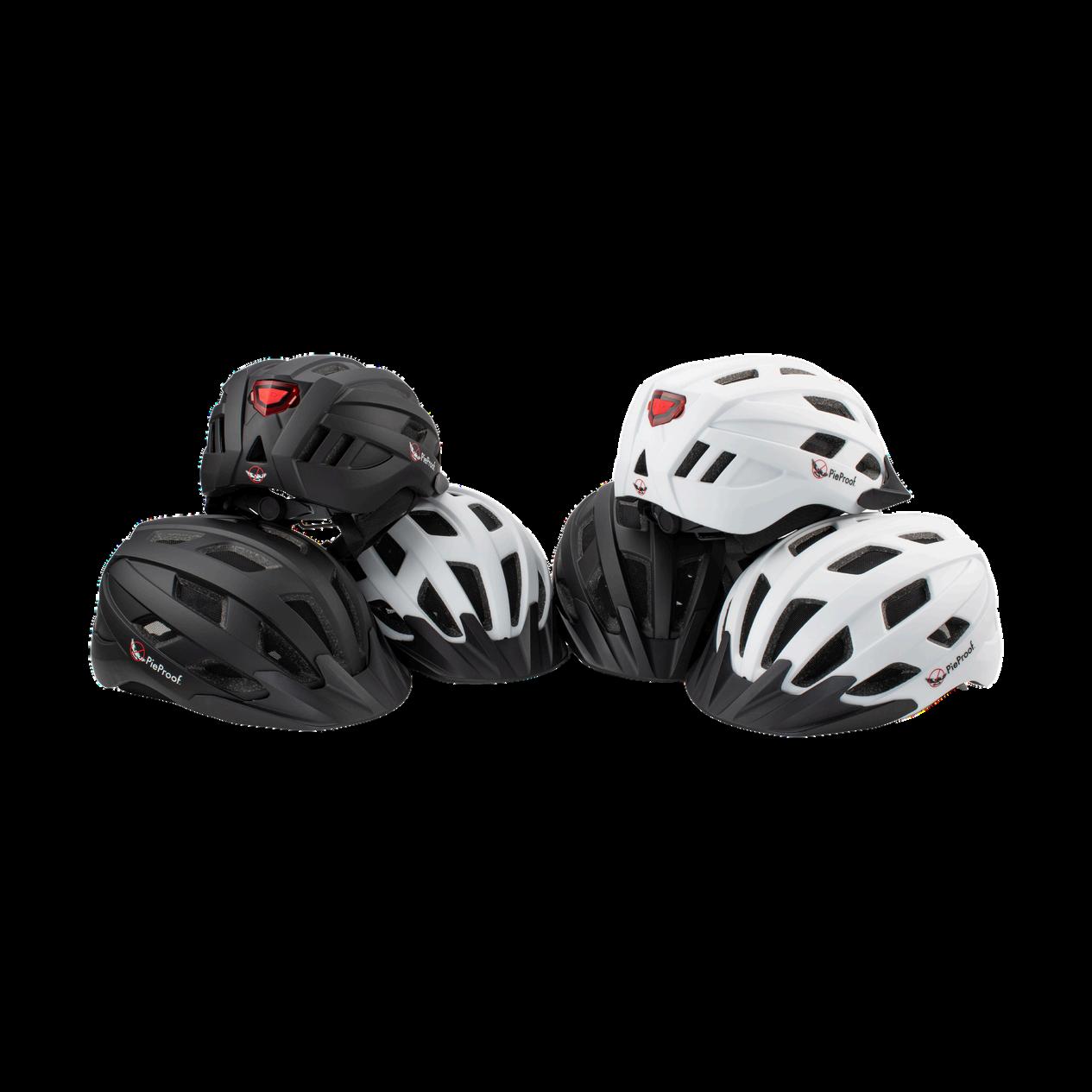
Protect yourself and your family for just $109 95 each
Full product details, independent reviews and some stunning videos of magpie attacks (Courtesy of Shane Miller – a.k.a. GPLama) can be found at PieProof com au

Join us on Wednesday 25 September in the Louie Louie Room, Verity Lane Market, 50 Northbourne Ave, from 6:30 pm until 8:30 pm, as we host an Election Forum in the lead-up to the 2024 ACT Legislative Assembly Election to be held on 19 October
Chris Steel MLA, ACT Labor Minister for Transport
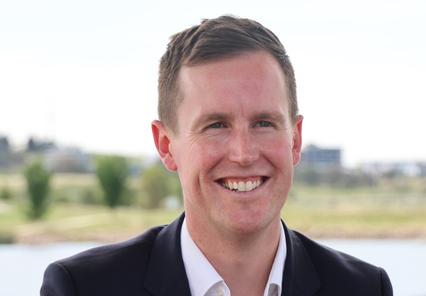
This free event will give elected representatives and candidates a chance to explain their cycling policies and commitments and provide our members and stakeholders with the opportunity to ask questions.
Our Panel Bookings essential.
Mark Parton MLA, Canberra Liberals Shadow Minister for Transport
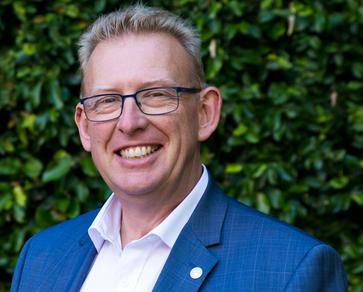
Jo Clay MLA, ACT Greens Spokesperson for Transport, Active Travel and Road Safety
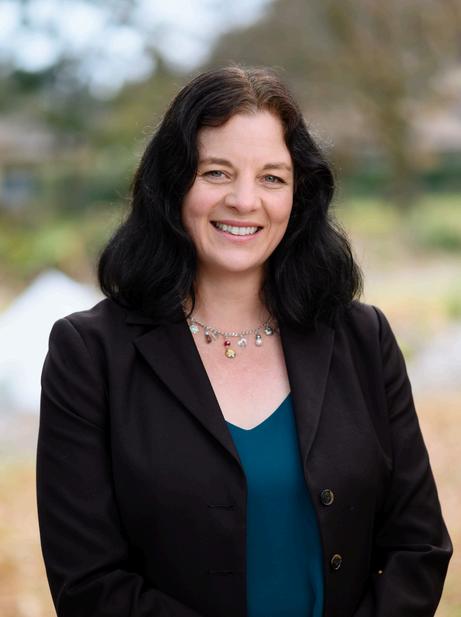
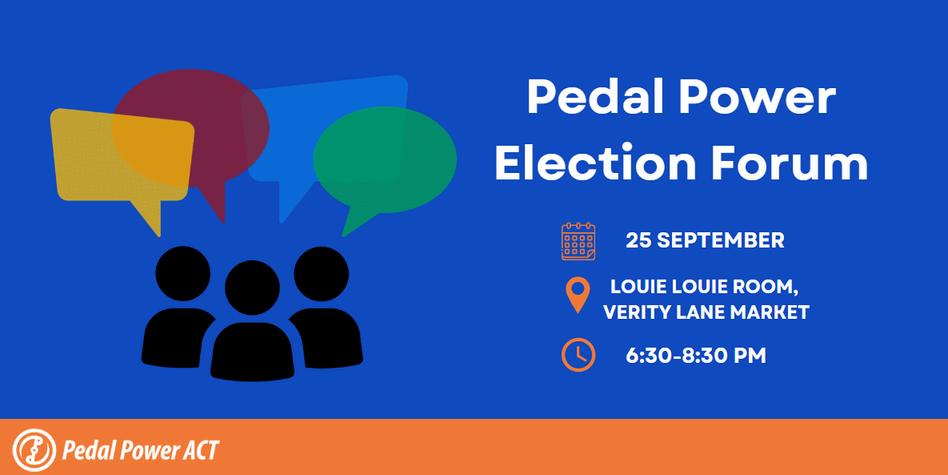
by John Widdup
Copenhagen has been rated as one of the most bicycle-friendly cities in the world since 2015 and is touted as a ‘cycling mecca’ and something for others to emulate. There are over 400km of cycle-only paths throughout the city that were installed progressively since the 1960s Today, 75% of the inhabitants cycle throughout the year and over 40% of all city-dwellers cycle to work, school, or university and 30% of all trips are by bike. That amount of cycling results from three important factors: infrastructure, infrastructure, and infrastructure.
In June, after riding for some time in Denmark, I arrived in Copenhagen and I spent the next five days cycling around the city centre, suburbs and periphery to examine the cycling infrastructure and observe locals on their bikes.
Copenhagen has more people than Canberra (1.4 million compared to 0 5 million) and a higher population density (7,000/km compared to 600/km ). Although there are some relatively high density areas with buildings up to five stories,
there are also extensive suburban areas with free-standing houses on small to large blocks.
In Denmark, the legal speed limits for motor vehicles are: 50 km/h in built-up areas (that is, all of Copenhagen except where signed at a lower speed limit); 80 km/h on main and secondary roads outside built-up areas; and 130 km/h on motorways (no cycling permitted). In the Copenhagen city centre, and on side roads and residential streets, most people drive at under 30 km/h (including those on motorbikes).
Denmark’s drivers keep a good lookout for people on bicycles and willingly give way when required In the event of a crash, there is a system of ‘presumed liability’ with the driver automatically liable unless they can prove that the crash was unavoidable and not due to their negligence.
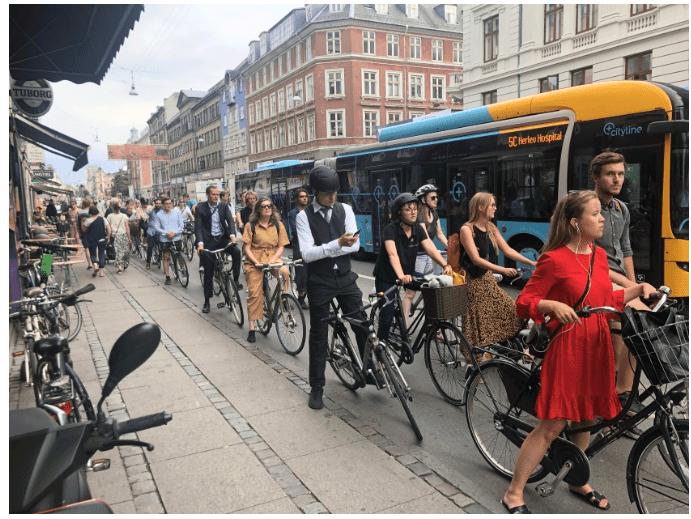
Cycling infrastructure in Copenhagen is simple, widespread and massively effective in encouraging people to ride. For example, nearly all arterial and sub-arterial roads have traffic lanes with one-way cycle-only paths and footpaths (walking-only) on each side. These lanes are separated by a low kerb with no other barriers between those facilities (photos 2).
People wishing to ride in the opposite direction to where they are, walk their bike on the footpa h the nearest crossing and walk across, as ridin not allowed on pedestrian crossings. Alterna they can join an intersecting cycle-only path ride to the other side
The width of those cycle-only paths varies fro about 2.0 m to over 4.5 m, depending on the available between the traffic lanes and the footpath and allowing for bus stops and sepa from parked vehicles, where permitted (phot and 3).
On many of the roads with cycle-only paths, t is evidence that a traffic lane has been remov allow the cycle-only path to be installed.
Pedestrian crossings are marked across the c only paths and people walking across have righ way when the lights are green
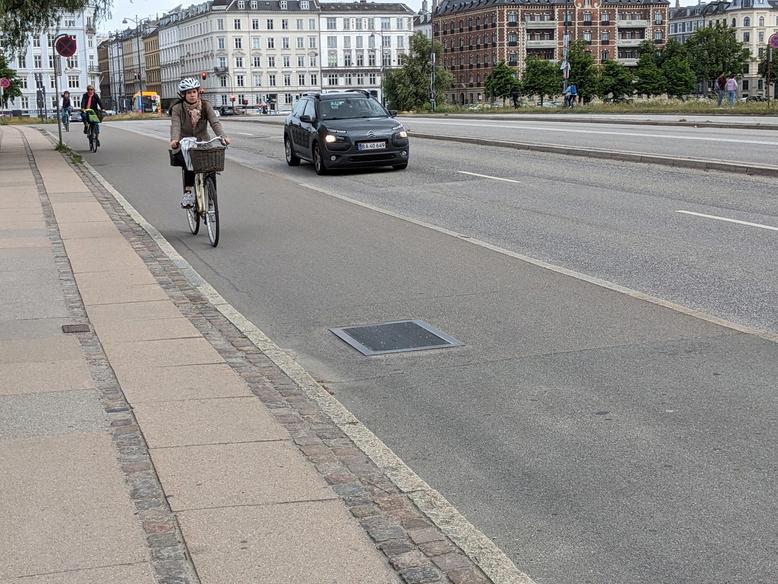
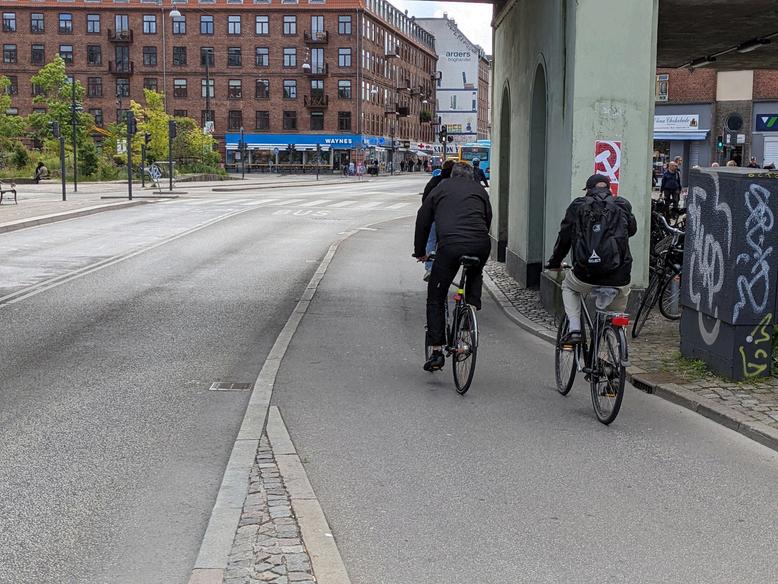
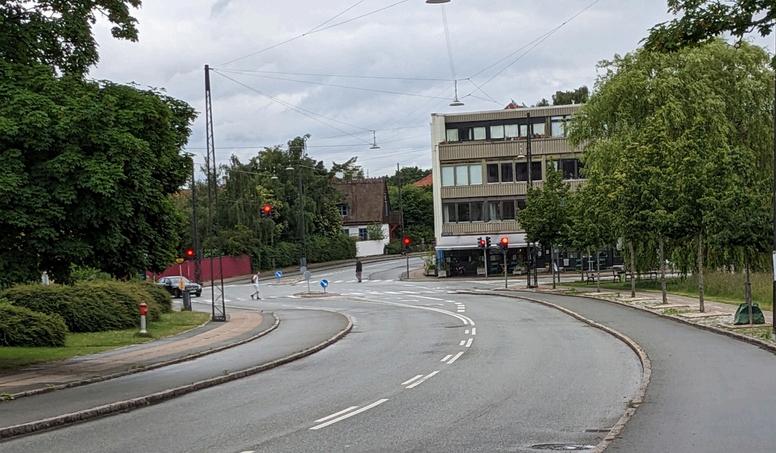
There are no left-slip lanes and thus no requirements for people on the cycle-only path cross such hazardous road sections as occurs i Canberra. Where a separate left-turn lane is required, the cycle-only path runs into the left turn lane (photos 8 and 9). In those shared area motor vehicle drivers and bicycles riders ming successfully.
Another safety feature to help left-turns happen successfully is that the motor vehicle stop lines are often set-back and the dedicated traffic signals for those cycling and walking give them a few seconds to start crossing before the motor vehicle drivers get the green light (photo 5)
Adjacent to its cycle-only paths, Copenhagen features two types of bus stops: those with an island between where the bus stops and
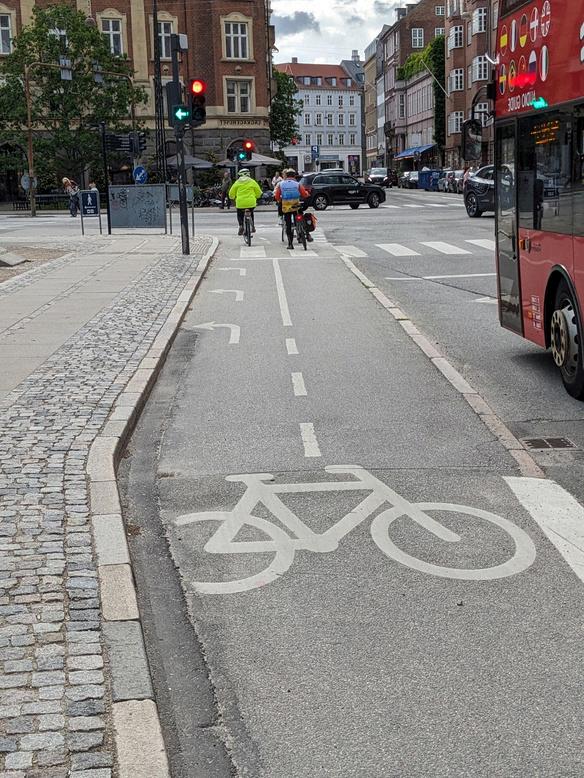
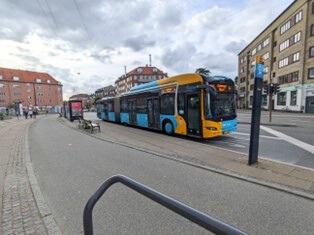
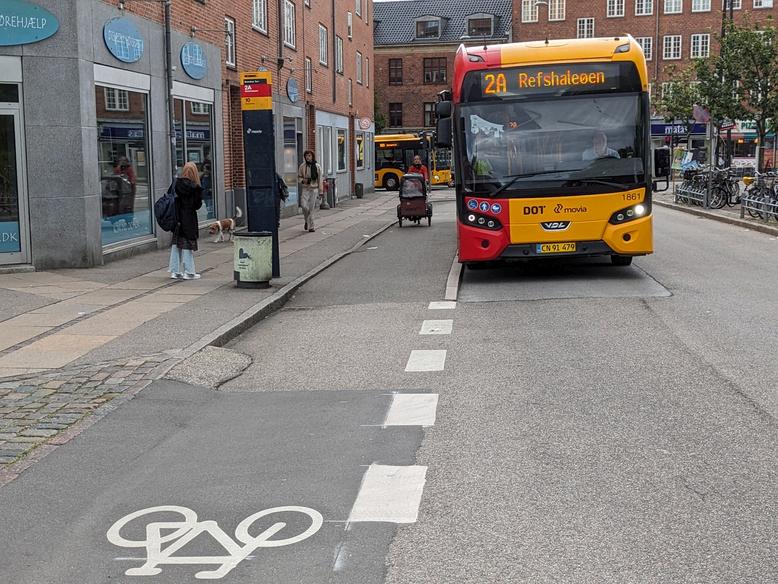
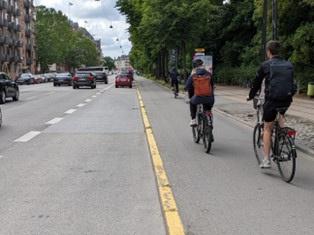
the cycle-only path, and those where the bus stops directly adjacent to the path. In the latter, people cycling are required to stop whenever a bus is present with an open door (photos 6, 7 and 8).
Roundabouts are more cycle-friendly too. On arterial and sub-arterial roads in the lower density peripheral suburbs, the cycle lanes continue through the roundabout and people driving give way to people riding bikes (see photo 10).
However, not all Copenhagen streets have cycling infrastructure For example, on some busy city and neighbourhood streets, on-road bike lanes are designated by a painted line.
On other streets, city- residential and industrialthere are no cycle lanes or paths at all and people cycle on the road – often down the middle of the traffic lane. Many of these streets have traffic calming measures to slow vehicles by design, such as no lane markings, narrow lane widths, a tight corner radius, or textured surfaces.
Canberra can learn a lot from Copenhagen!
**NOTE: in Denmark, traffic ‘keeps right’, but for this article, where applicable, the author has written left for right and reversed the photos to read and look as if they ‘kept left’ **
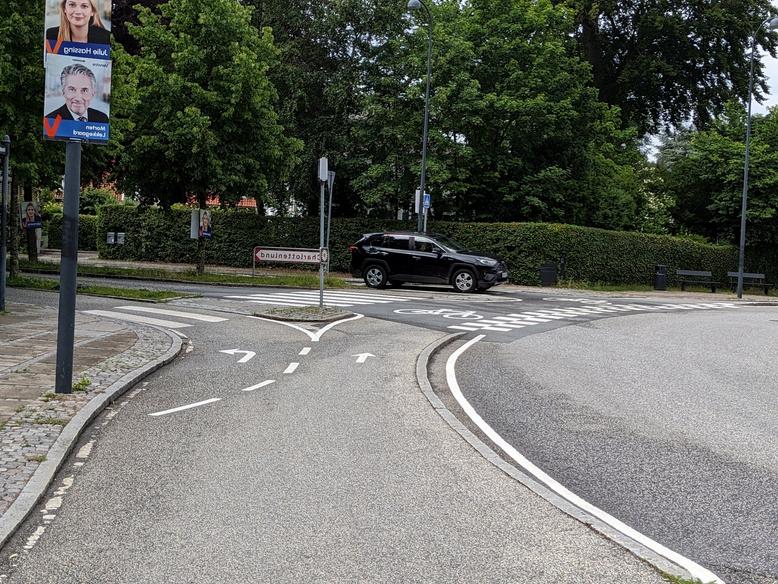
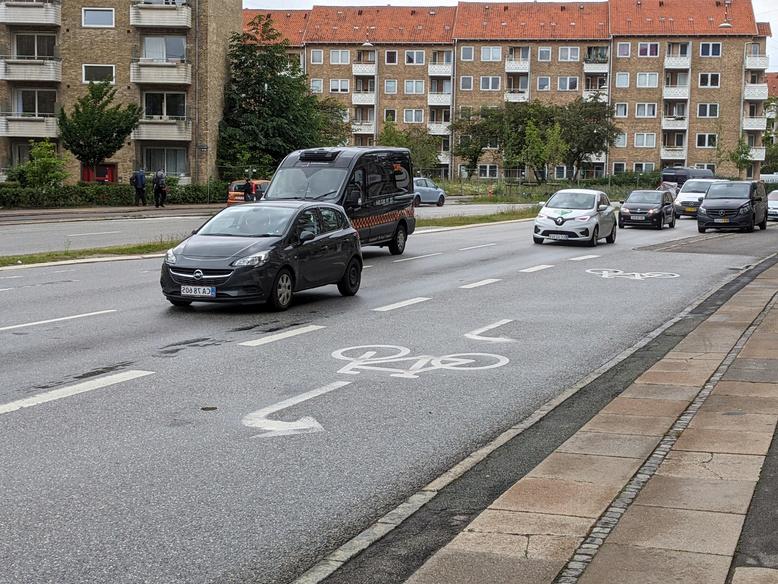
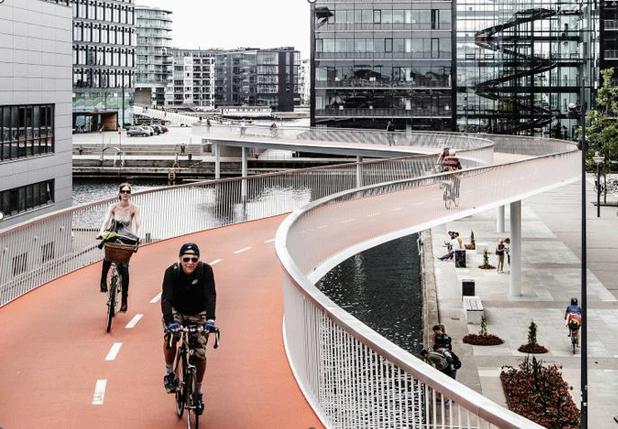
by Jeanine Motha
What is your favourite snack to power you along on your rides?
If you have a tried and true recipe that’s easy to make and carry and gives you just the right amount of energy without weighing you down, please send it to us so we can share it in the future
These oat slices can be whipped up in no time and contain fruit and oats for energy. Not to mention, they taste delicious! A word of caution- you may need to carry extra for your riding companions!
Recipe and image credit: https://mykidslickthebowl com/easy-oat-slice/
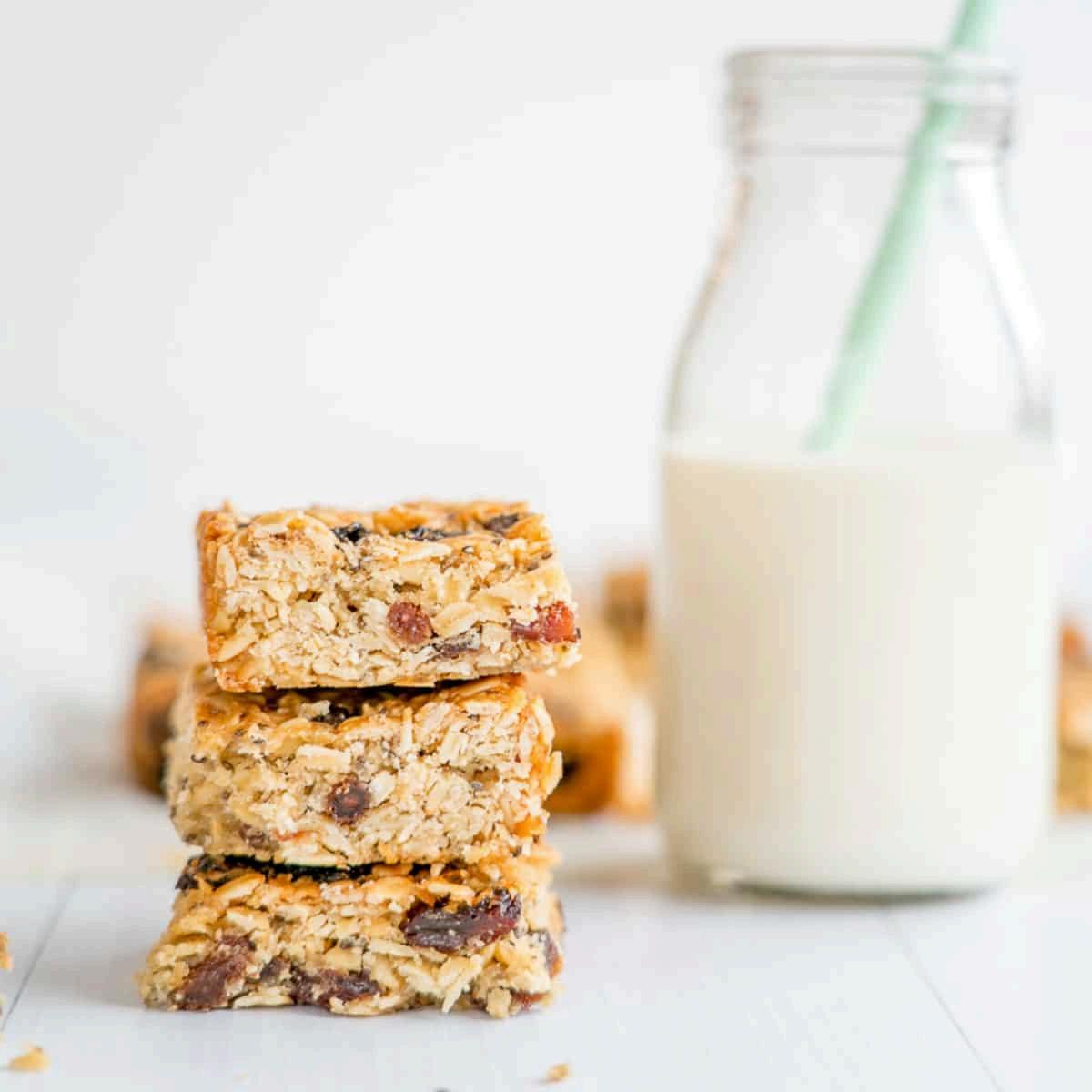
Ingredients:
- 1 egg OR 1 Tbsp chia seeds, soaked for 10 mins
- 2 Tbsp water
- 125g melted butter
- ½ cup brown sugar
- 1 tsp vanilla
- ½ cup plain flour
- 1 ½ cups rolled oats
- ¾ cup raisins
Method:
1. Use a whisk to mix the brown sugar and melted butter
2. Mix the egg or the soaked chia seeds into the butter mixture.
3. Whisk in the vanilla.
4. Using a wooden spoon, mix in the flour.
5 Add in the rolled oats and combine
6. Mix in the raisins until evenly distributed.
7. Line a slice or cake tin with baking paper, and add in the raisin mixture.
8. Put the mixture into the oven at 180 degrees Celsius for 20-25 mins.
Alternatively, remove them from the oven when the edges turn golden and separate themselves from the edge of the tin.
9. Wait until cooled, then cut into squares.
One of the best things about this recipe is that you can vary it however you like. If you don’t care for raisins, swap them out for your favourite dried fruit.
You can also slice up the bars as big or as small as you want. Then cycle with confidence, knowing that you have a tasty treat stocked up for when you’re feeling peckish!
by Louise Watson
In an age when jobs are more sedentary than ever and we need to find ways to fit exercise into our daily routine, commuting to work by bike seems like a no-brainer.
Governments agree and are installing more separated bike lanes in towns and cities to protect cyclists riding through traffic.
While feeling safe cycling alongside cars is essential, other obstacles can stand in the way of a successful commute by bike.
The weather can weaken a commuter cyclist’s resolve, especially when they wake up to cold, foggy and even icy conditions At other times, cyclists need strategies for blistering heat as well as wind and rain. But with the right gear and equipment, coping with Canberra’s weather is not too difficult.
Riding home in the dark can feel unsafe, particularly on meandering shared paths that, beautiful in daylight, are pitch black at night. Even with the strongest beam of light from your handlebars, it’s hard to see hollows, bumps and bends until you’re on top of them And if a cyclist with a helmet-mounted headlight approaches from the opposite direction, you may be temporarily blinded.
To avoid shared paths at night, cycling on well-lit but busy roads or bumping along footpaths are two alternatives for Canberra commuters. Other options may include adjusting your work hours to ride home earlier in daylight, or later after peak hour when the roads are quieter, though this may not be possible for everyone.
“To shower and change at work, or not?” is a dilemma. There are pros and cons for both sides and the answer depends a lot on how far and how hard you have to ride.
One of the cons for cyclists who diligently pack up their clothes, towel and sponge bag to carry into the office is the discovery upon arriving, hot and sweaty from a Lycra-clad commute, that they have forgotten something. Commencing a workday without the benefit of a towel, a hairbrush, an item of underwear or normal shoes can make for a stressful start.
Cycling in your work clothes, even in a dress and high heels (yes, I’ve done it) is often easier.
But with practice and a bit more organisation (ie. pack the night before) the risk of forgetting something can be reduced. A spare set of everything stashed in your desk drawer also helps.
Distance is a major barrier to commuting by bike in Canberra, where most residential suburbs are 10 to 30km from the city. Only the most fit – and committed – cyclists (who also have time to spare) can manage to commute such distances on a bike.
Using public transport to shorten the time spent in the saddle when commuting by bike has its challenges too.
Wrangling your bike onto the front of a bus can be nerve-wracking, especially in the beginning. It’s difficult to remain calm while standing in front of a bus with all eyes on you, as you try to secure your bike onto a big yellow rack.
However, it’s actually quite simple to use the bike carriers on Transport Canberra buses and it gets easier with practice. Trying it out during nonpeak times is a good way to start – and with a friend, even better.
The limited space for bikes on buses and Light Rail is frustrating, especially during peak times. If the racks allocated for bikes are already taken, the commuter cyclist will be left behind, waiting for the next bus or Light Rail and hoping it will have free spaces, while contemplating the consequences of arriving late for work, again.
Canberra cyclists need to be creative if they want to reduce the distance of their commute. Two members of Pedal Power’s staff have done just that, developing ‘mix and match’ solutions with different transport modes to make a cycling commute work for them.
Living in Harrison, Jordan Hull would face a 20km round trip if she cycled to the Pedal Power office in Civic each day and needed a shower and change of clothes on arrival. Instead, she rides for ten minutes from home to the Light Rail stop at Well Station Drive, where she locks her bike in the Park and Ride facility, then hops on the Light Rail for a 15 minute ride into Civic.
Jordan feels better for her cycle commute.
“I can easily cycle up the two small hills on my route now . . . they felt like mountains on the first day!”
“Starting the day with a ride gives me a chance to call my Mum, and ending it with a ride clears my head”.
It was a while before Jordan started riding her bike to the Light Rail stop rather than driving her car to the Park and Ride at Well Station Drive.
“It seemed such a challenge and I was worried about leaving my bike there all day”, she says. But the area is well-lit and even though it’s not a locked cage, she’s “had no trouble so far” except for her bike getting wet from rain.
When riding home in the dark, Jordan stays on a shared footpath which is “mostly OK”, except for

“ one section without lights that is a bit scary”. In the mornings, she takes a more scenic route around a lake where she enjoys the bird life, most of the time:
“An aggressive swan attacked me one day . . . I had to cut short my call to Mum that morning!”
An unprotected bike lane along the Federal Highway gave Ilaria Catizone no incentive to cycle to work from Bywong every morning, as well as the 25km distance. Instead, she drove her car to Lyneham where she left it in the Park and Ride before taking a Light Rail along Northbourne Avenue into Civic
After six months of standing on the Light Rail, Ilaria thought of a way to cover the distance on her bike instead, without the hassle of fitting a bike carrier to her car. If the rear car seats were put down, she realised, her bike would fit inside the back of the car and she could simply lift it out for the ride to the Pedal Power office.
Deciding to cycle on the footpath along Northbourne Avenue, rather than on its unprotected bike lane convinced Ilaria that she “had no excuses for not commuting from Lyneham to Civic by bike.”
Ilaria has been surprised at the impact of this short ride on her fitness. “It’s only a flat ride along Northbourne Avenue, but I can now cycle up hills around home where I used to have to get off and push.”
With the option of leaving her bike inside her locked car, Ilaria can still hop on a Light Rail if she needs to, but rarely does.
“After a 20 minute drive into town,
it’s refreshing to get on my bike for the last leg”, Ilaria says. “Cycling is so much nicer than a crowded Light Rail.”
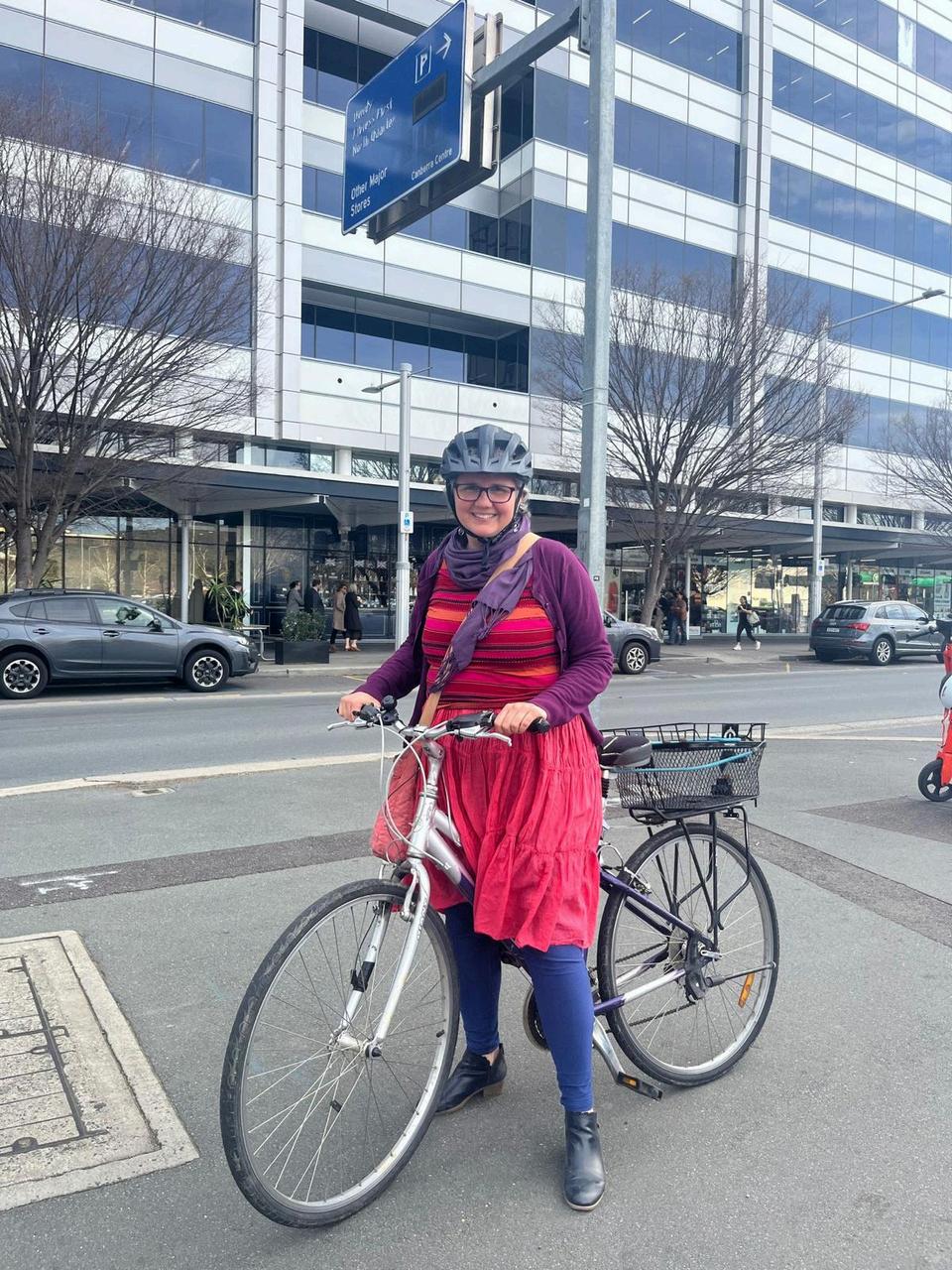
Whether we want to boost our fitness, lift our spirits, or simply breathe more of Canberra’s clear, crisp air, cycling to work is well worth the effort.
It just takes a bit of creativity – and organisation – to make a cycle commute work.
Do you have a creative way of including cycling in your commute? We’d love to hear from you
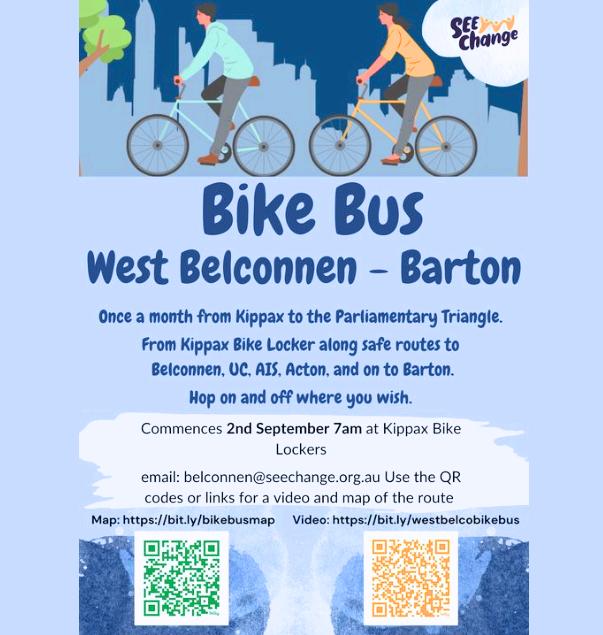
Do you enjoy reading this magazine? Tell us why. Which are your favourite stories? Why? What do you want to see more or less of?
If you have any feedback about this magazine, please get in touch.